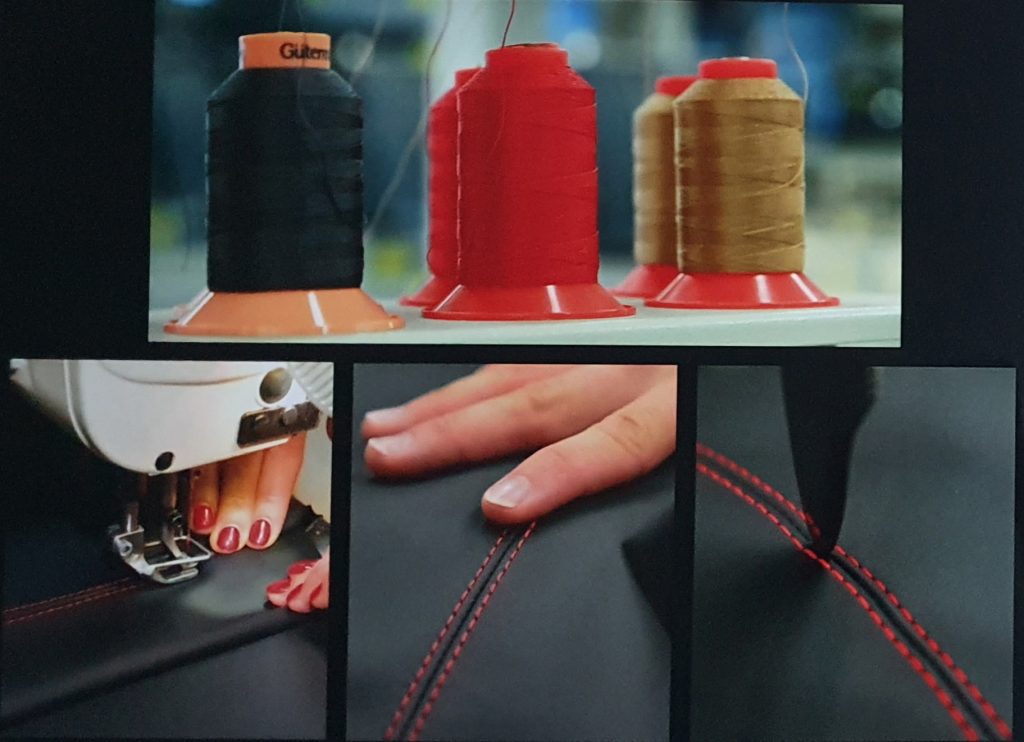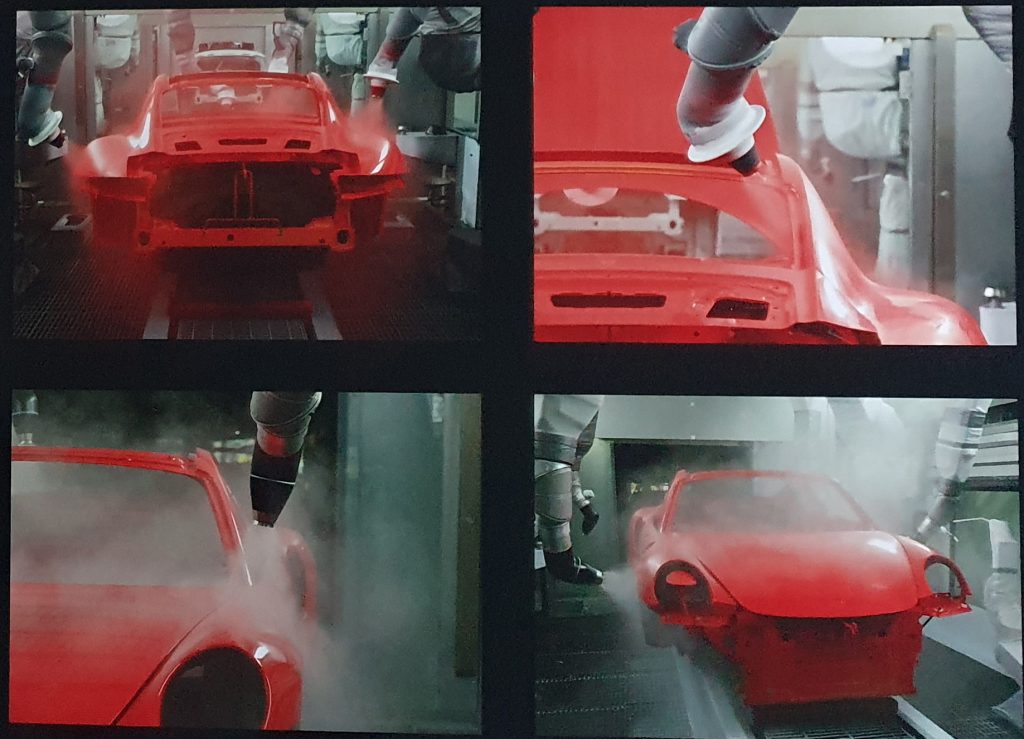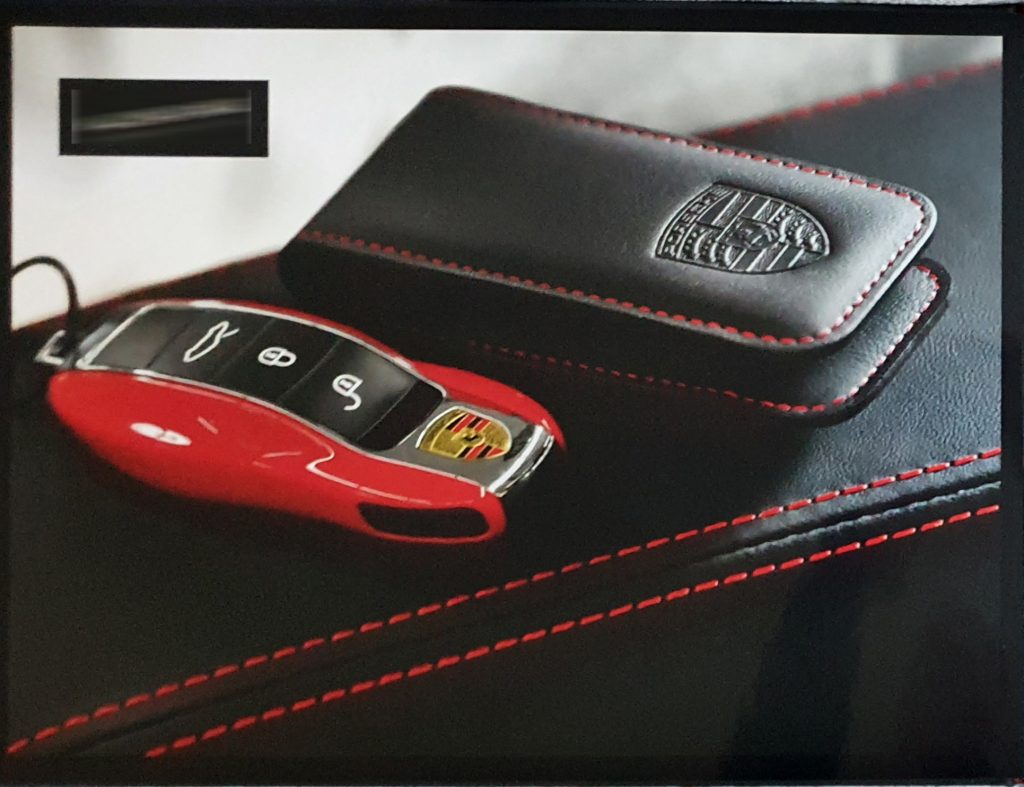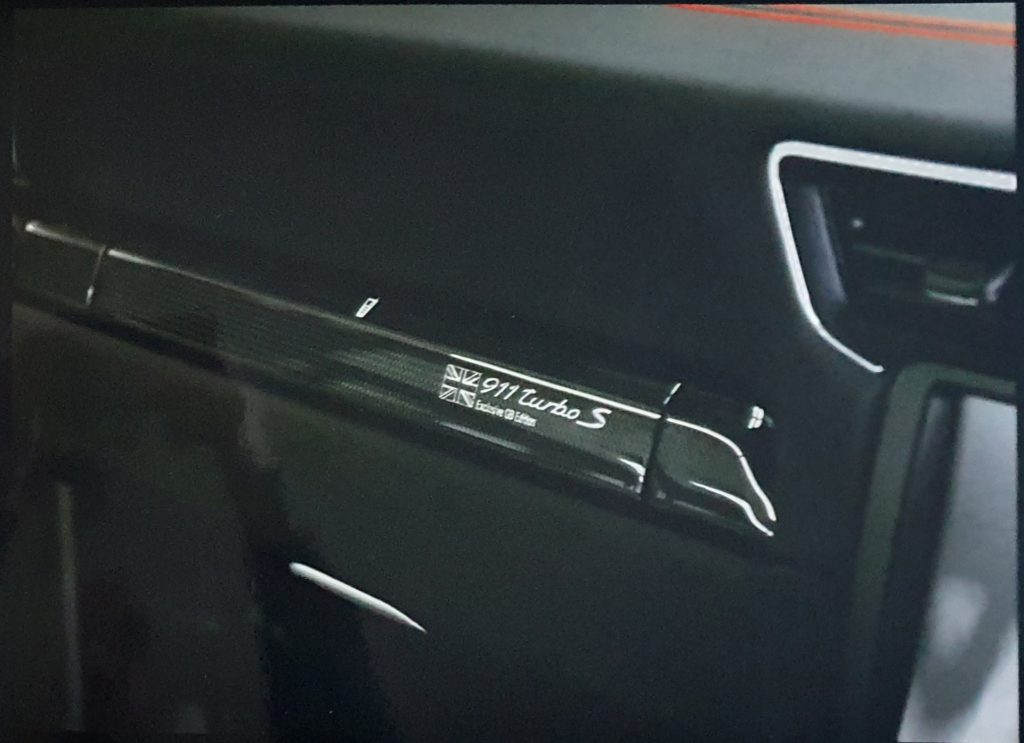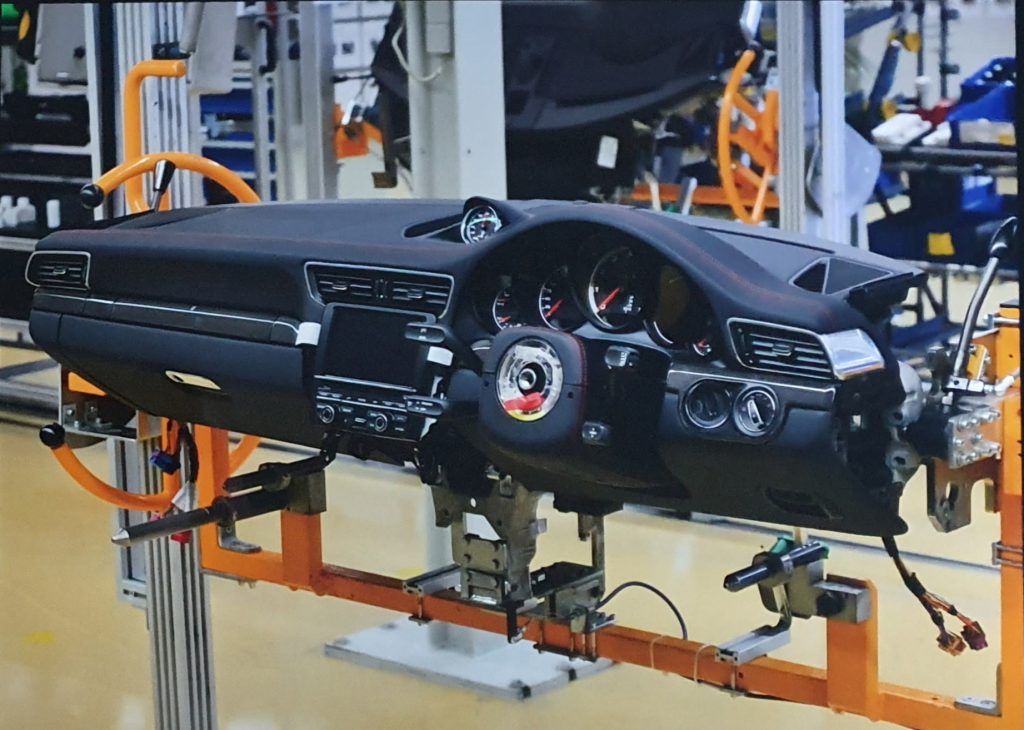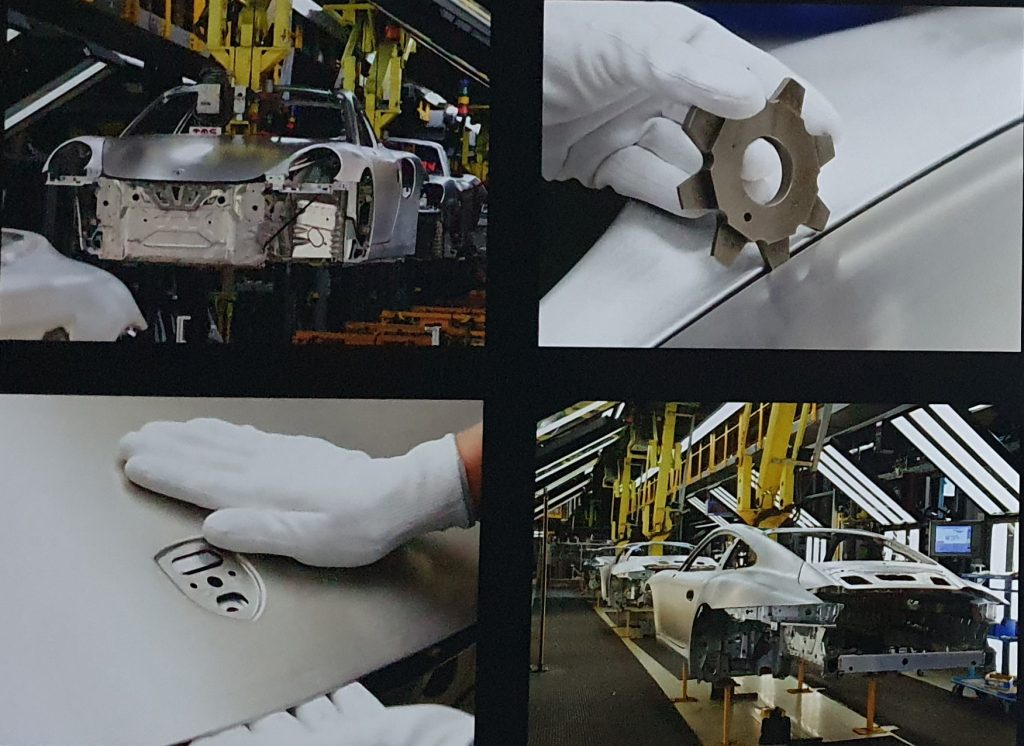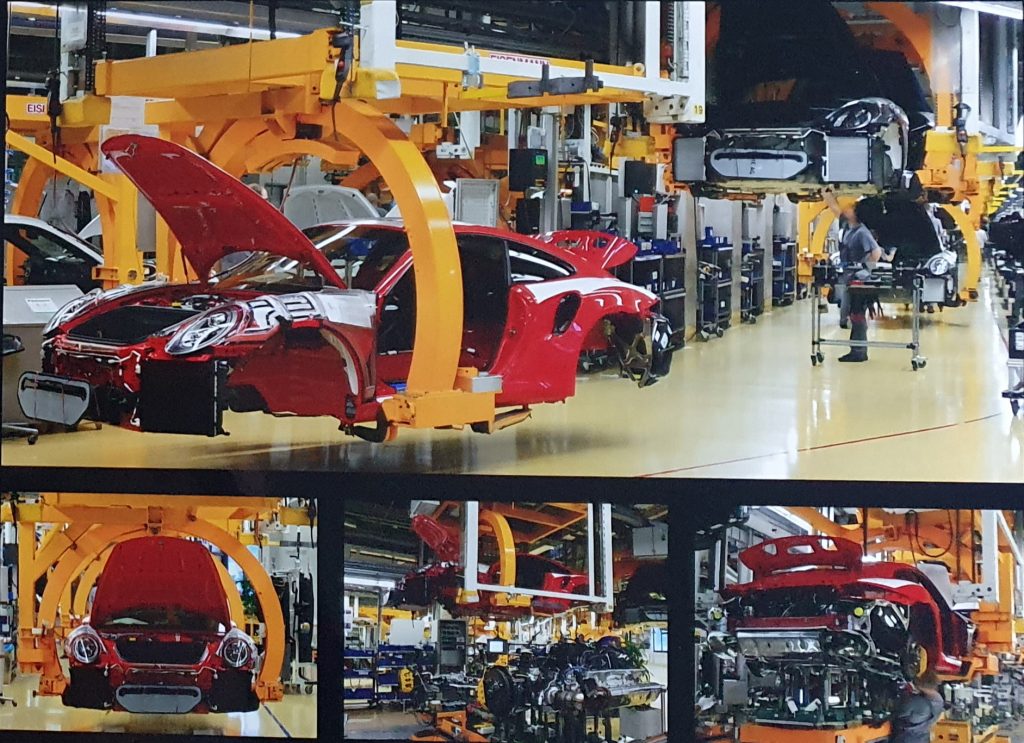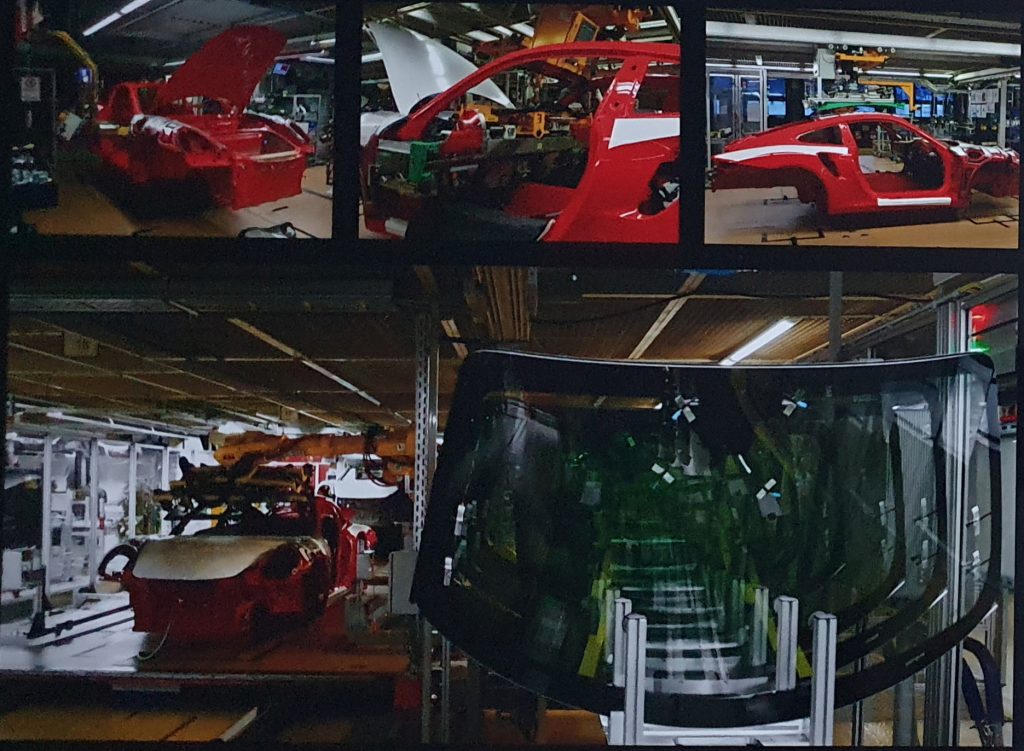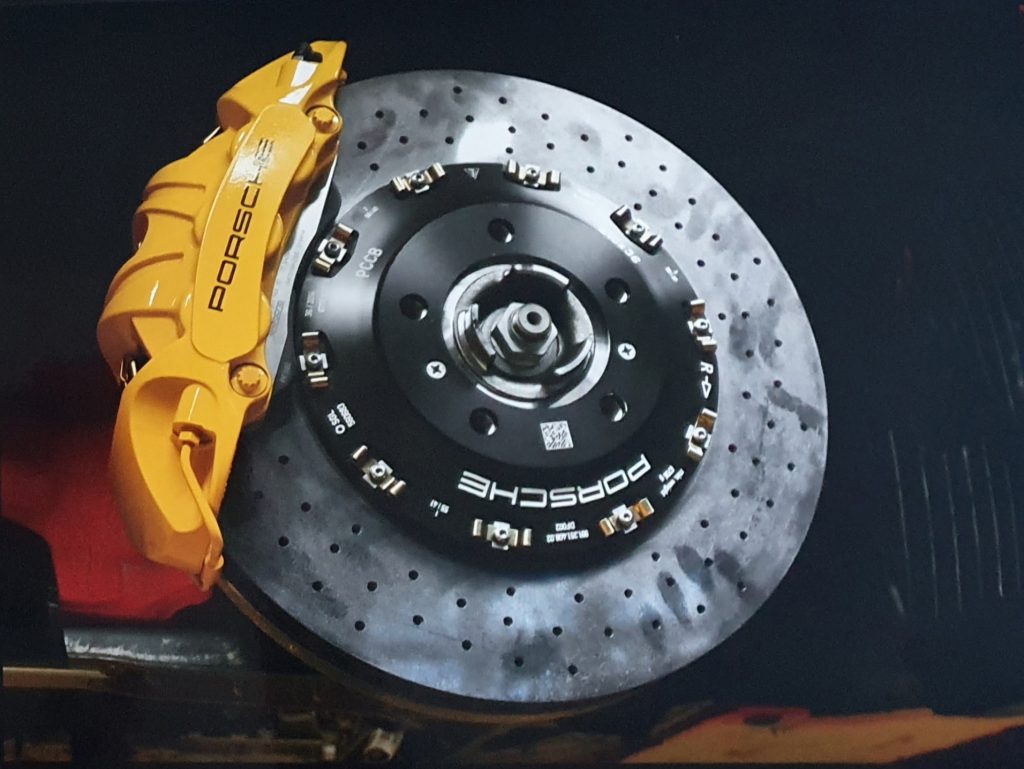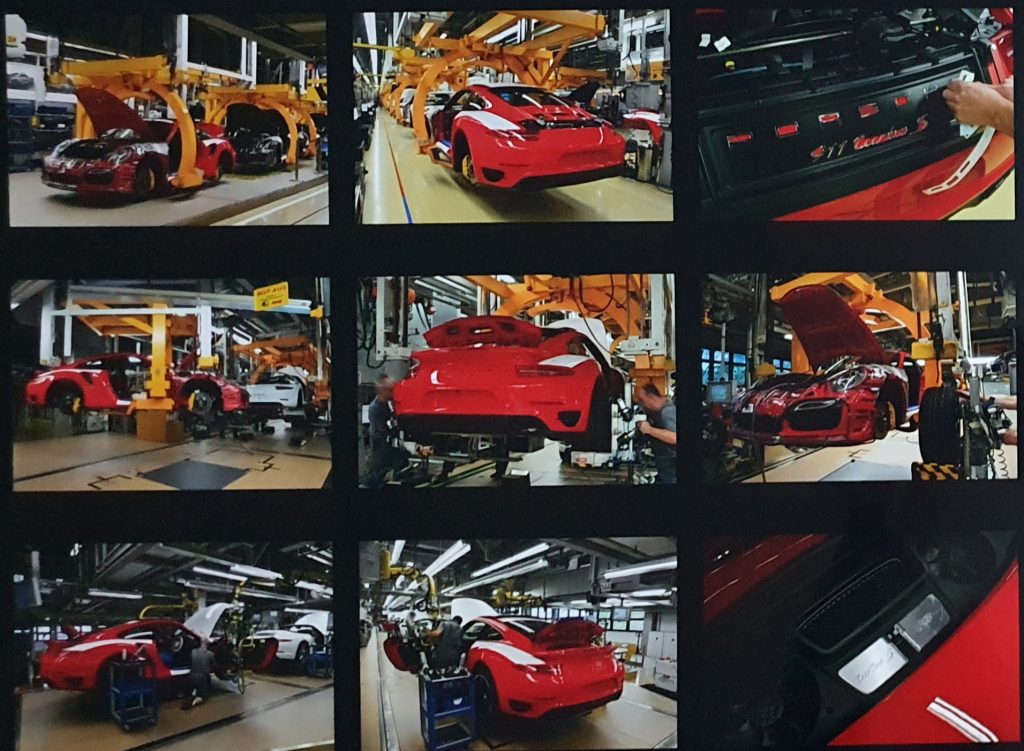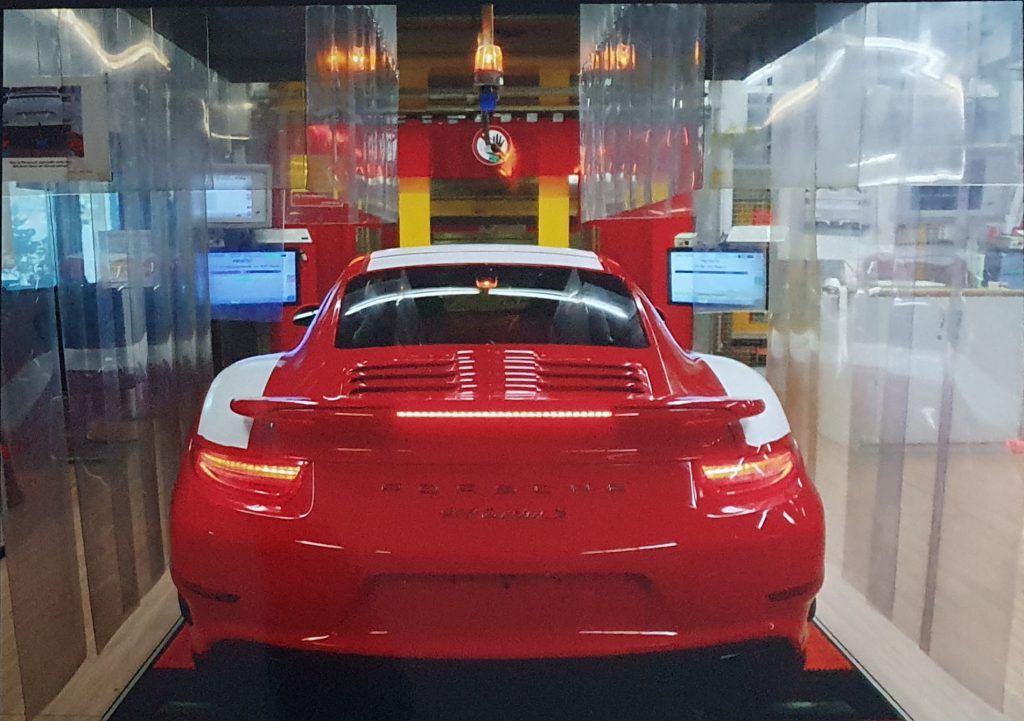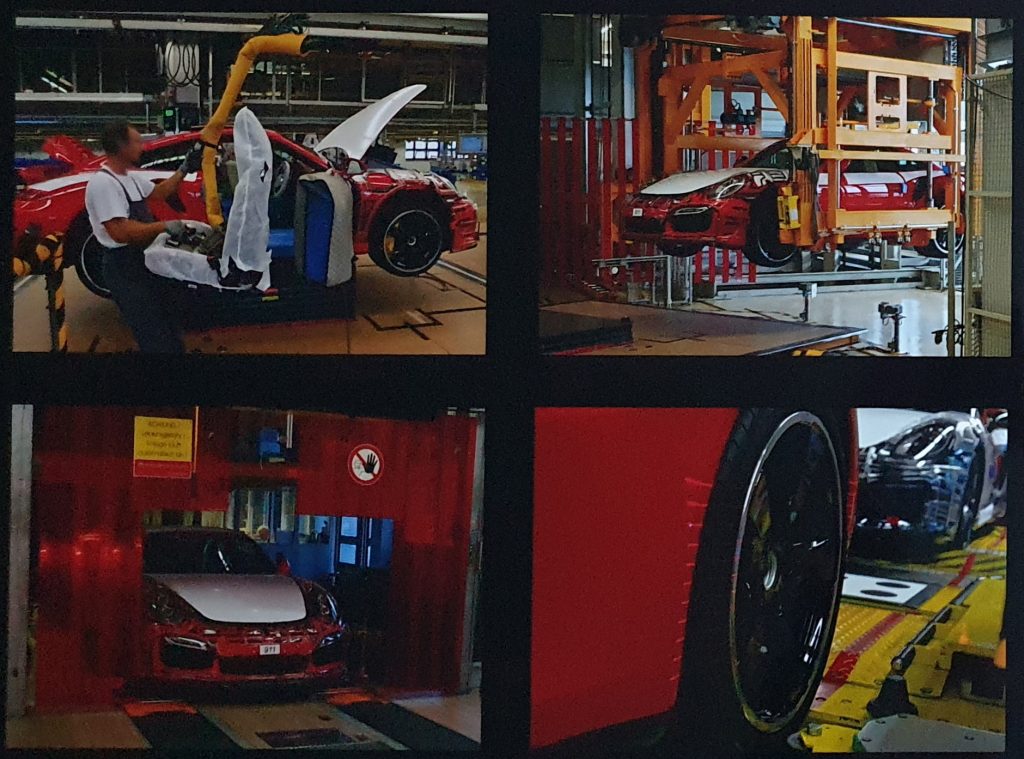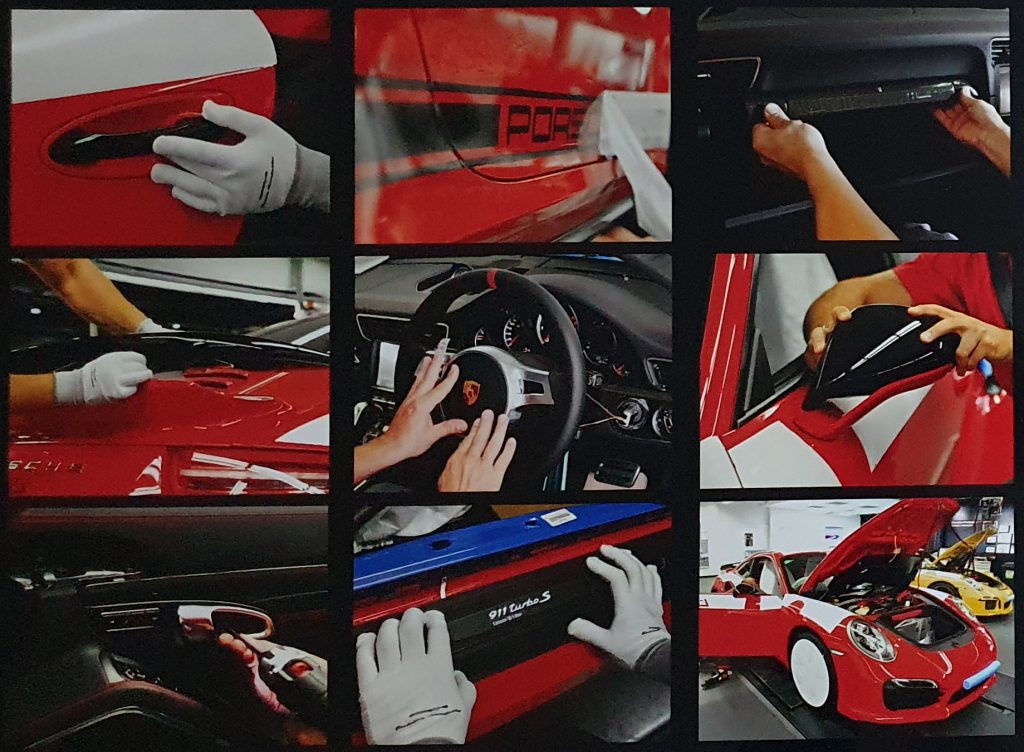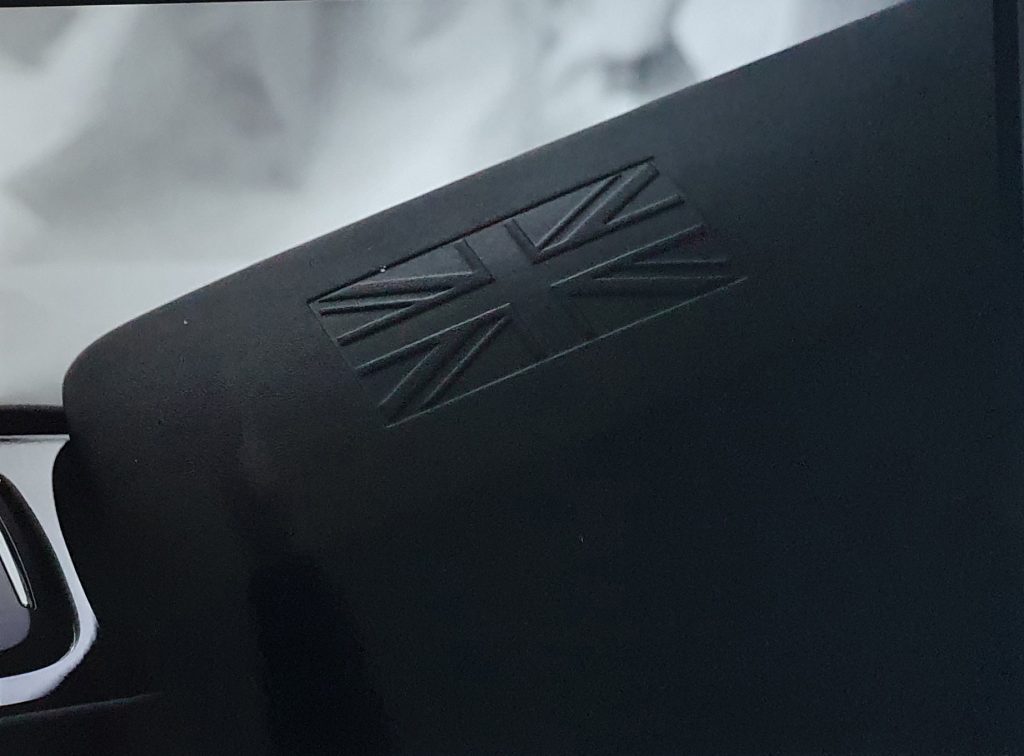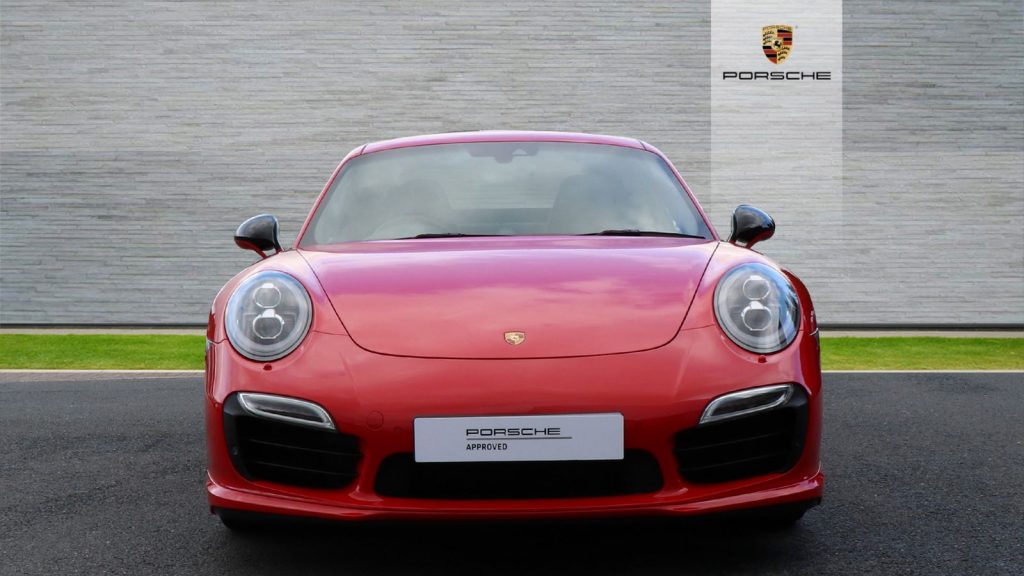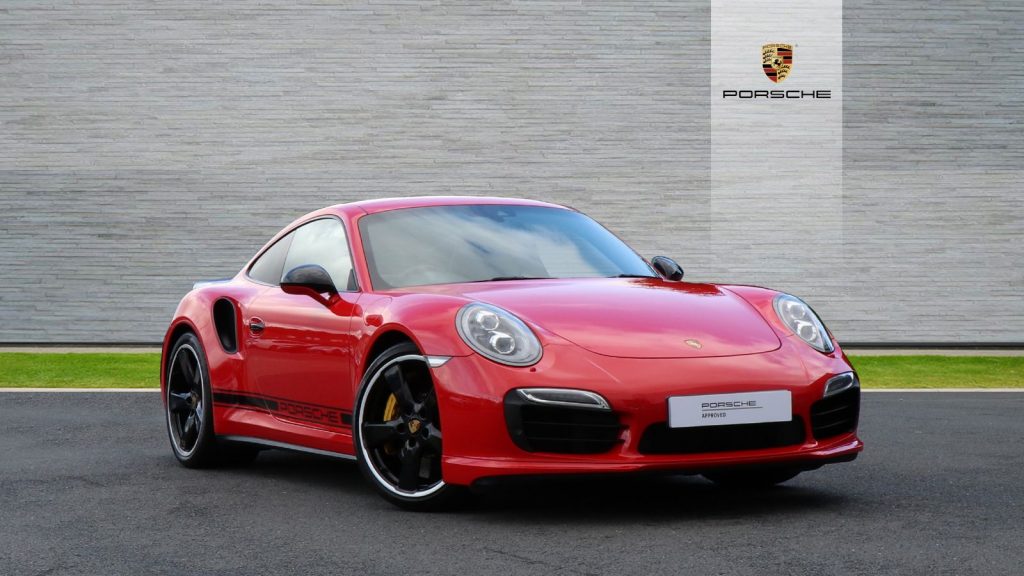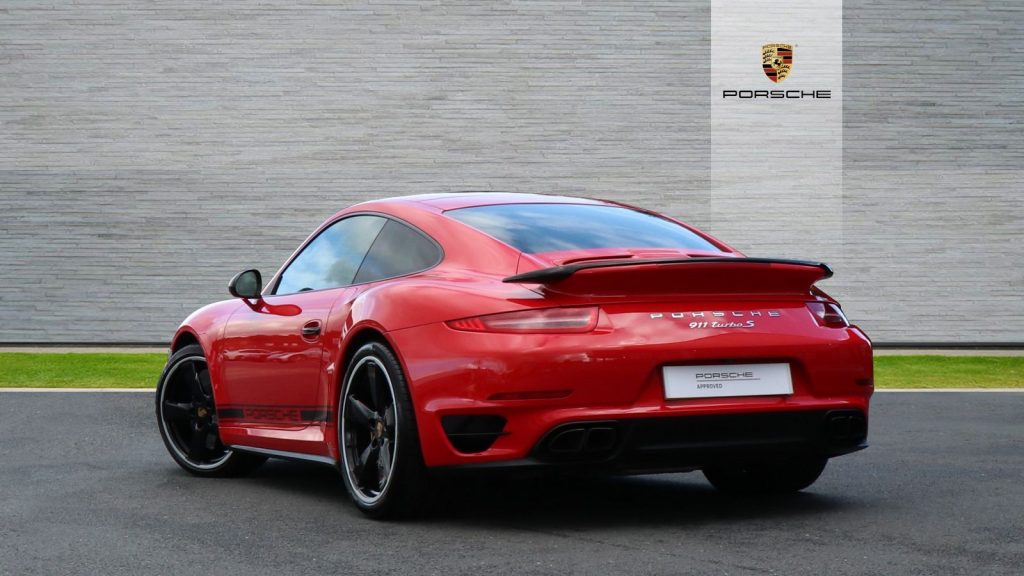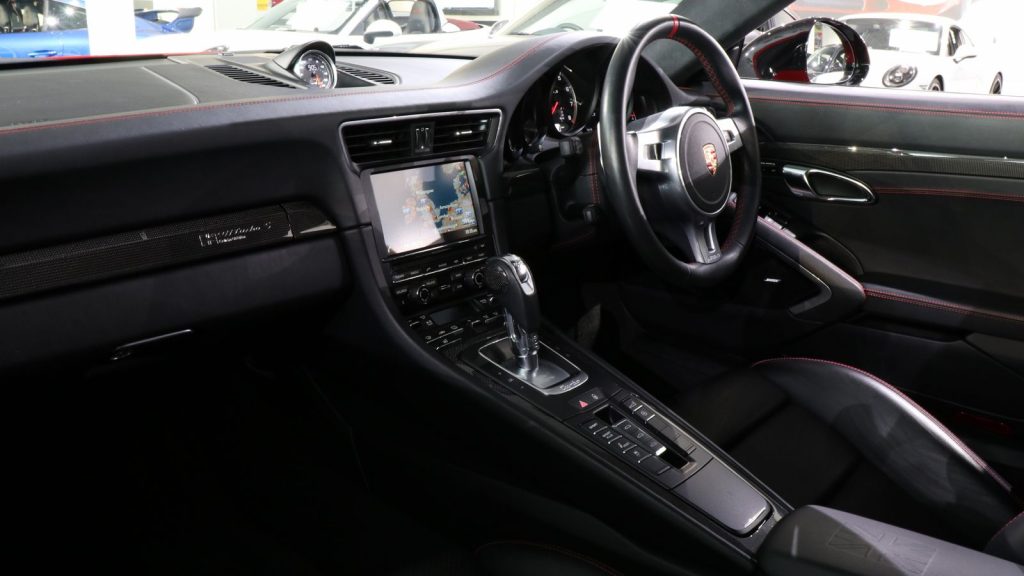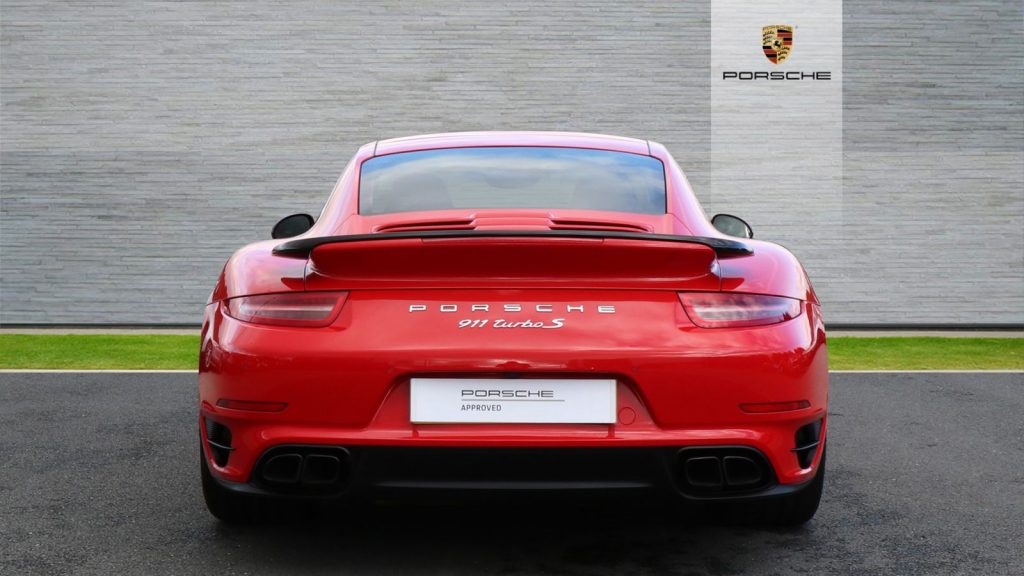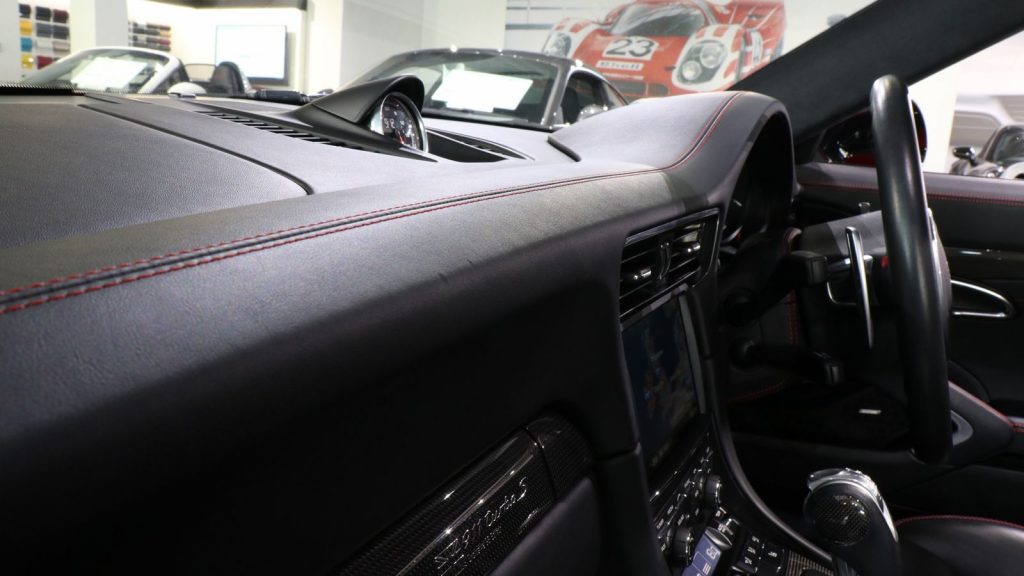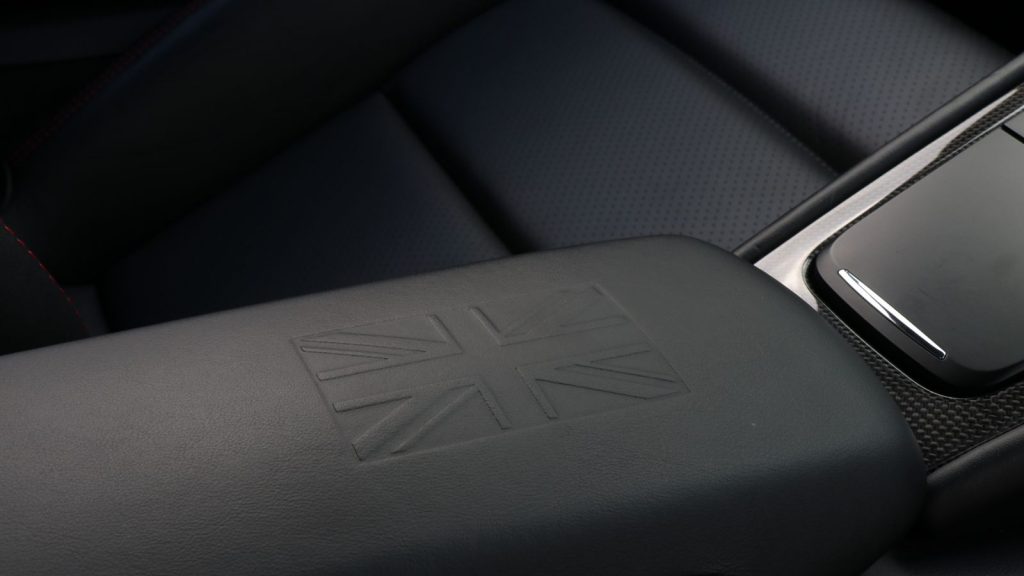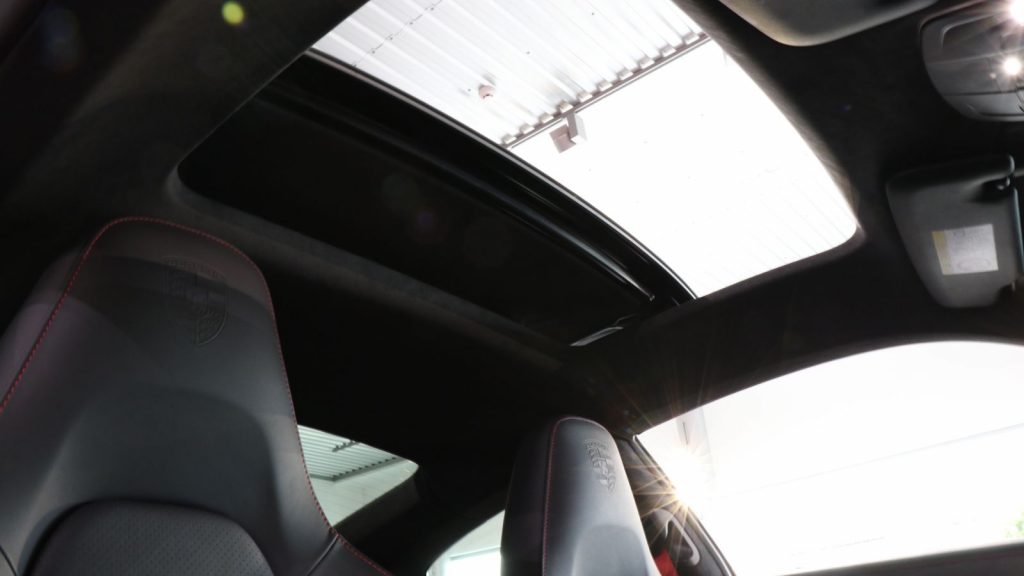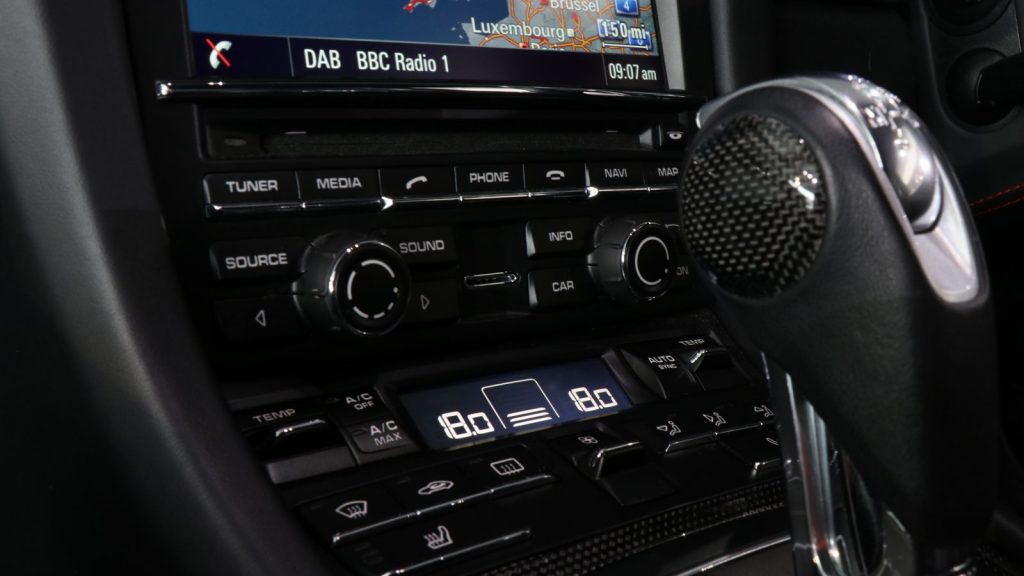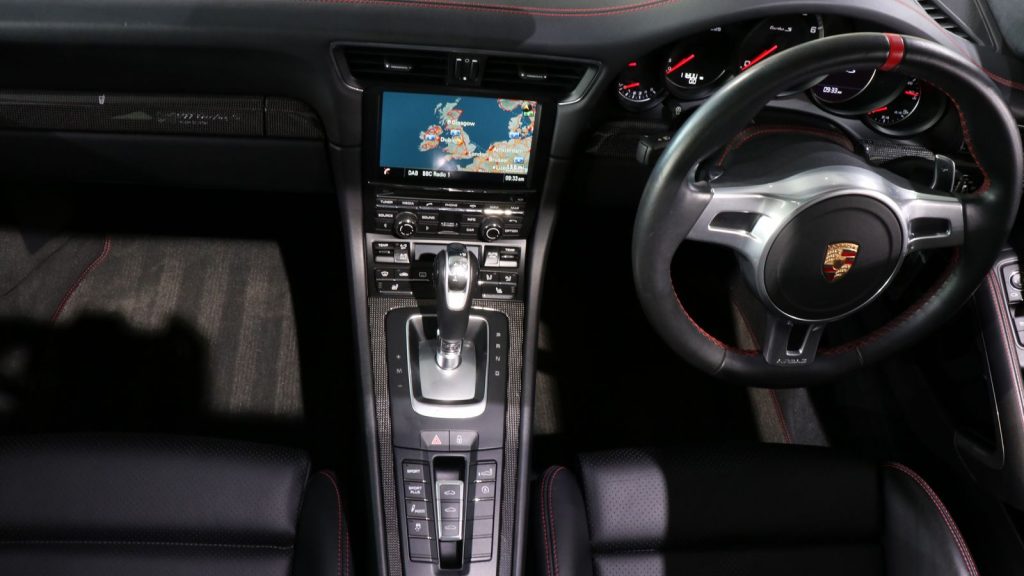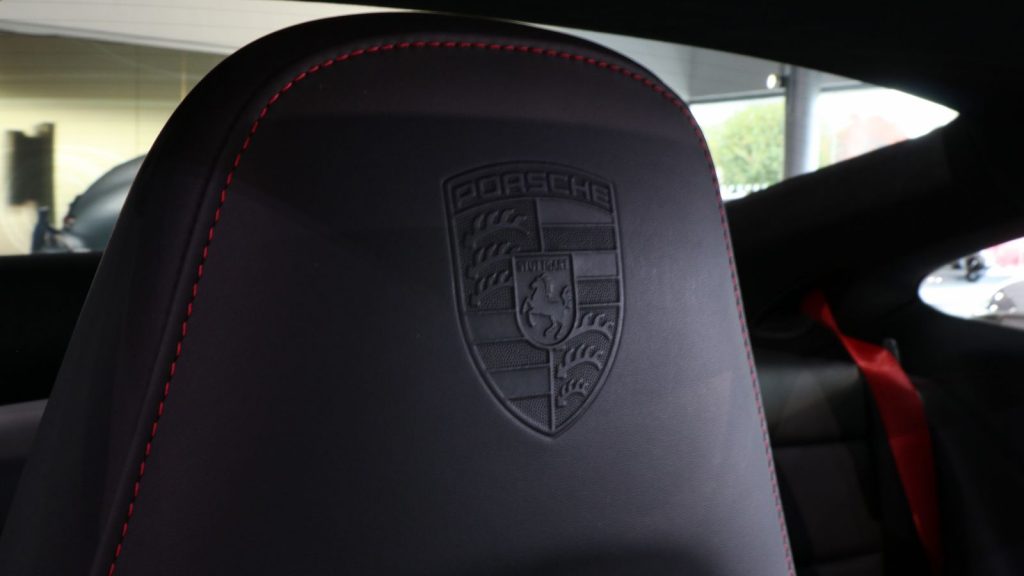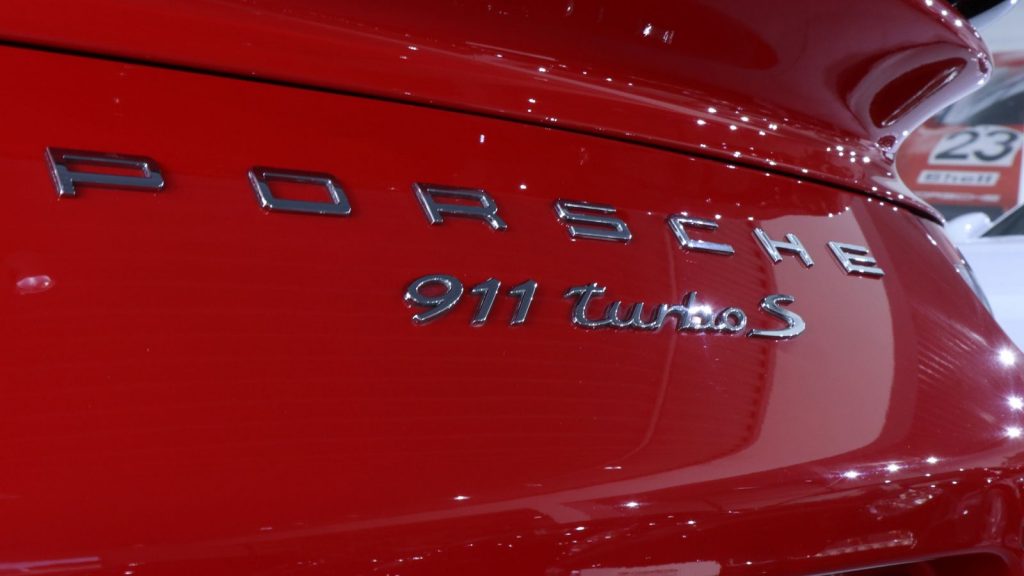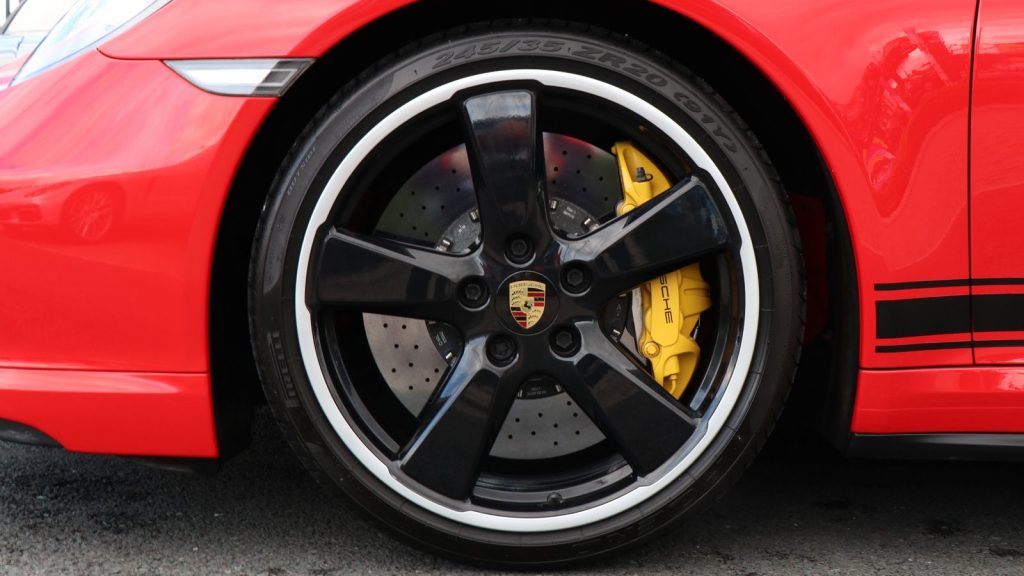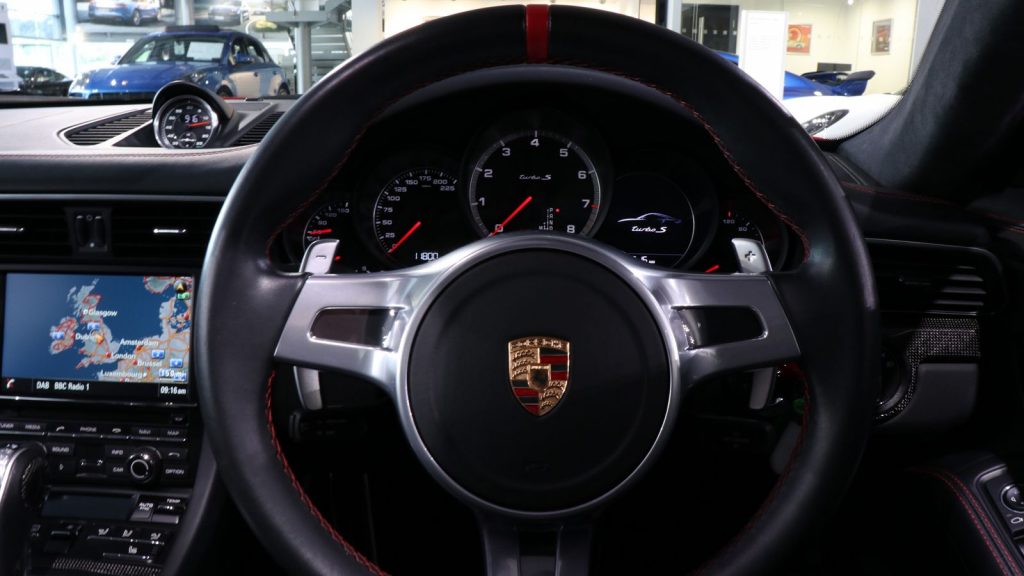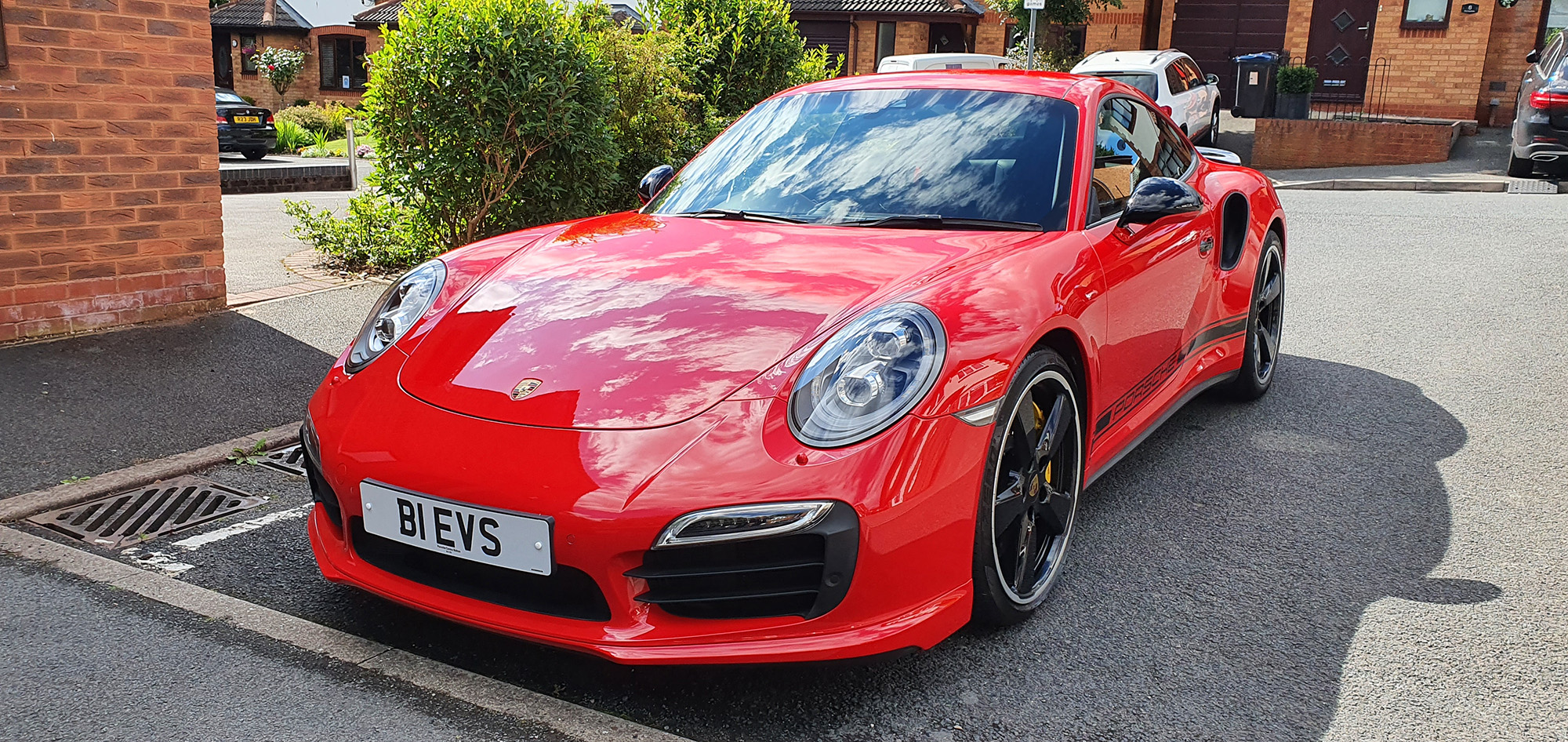
Porsche 911 (991) Turbo S GB Edition
40th Birthday Collectors Car
If like me you were born in the 70's and at birth became a 911 fan, then the release of the all-time lifelong legend, the 911 Turbo back in 1974 was a pinnacle point in the journey for Porsche's history. In 2014 it is the 40th Birthday of the 911 Turbo and Porsche have decided to make a very special car, designed and styled to be like the original but in the derivative of the 991 which is the best 911 Turbo to date and this will be an S model.
This 40th Birthday special is being built for collectors and is built in the exclusive department. There are only building 40 vehicles in total, 1 car for each year of the 40 making this a very special collectable car for the lucky Porsche collectors that have the buying power to buy one.
The Original Porsche 911 released in 1963 known as the 901
The original 911 was born in 1963m but not called a 911 it was named as the 901 and was developed from the successful Porsche 356. It was actually Peugeot that helped name the 911 as they claimed that they had the exclusive rights over the 901 name in motor vehicles and as a result, Porsche had to change the number which resulted in them called the new car the 911.
It was in 1934 that Porsche started to get involved in vehicles and developed the Volkswagon Bettle. The Bettle set new standards in design.
The development of the 911 was as a result of Ferry (Ferdinand Anton Ernst Porsche) Porsche running the company whilst his father was in prison for war crimes. Ferry wanted a special car and there wasn't a car he liked so decided to develop one which was the birth of the 356 and in 1948 the cars began life.
The 911 has been built continued since and in 2017 had built a 1 million now.
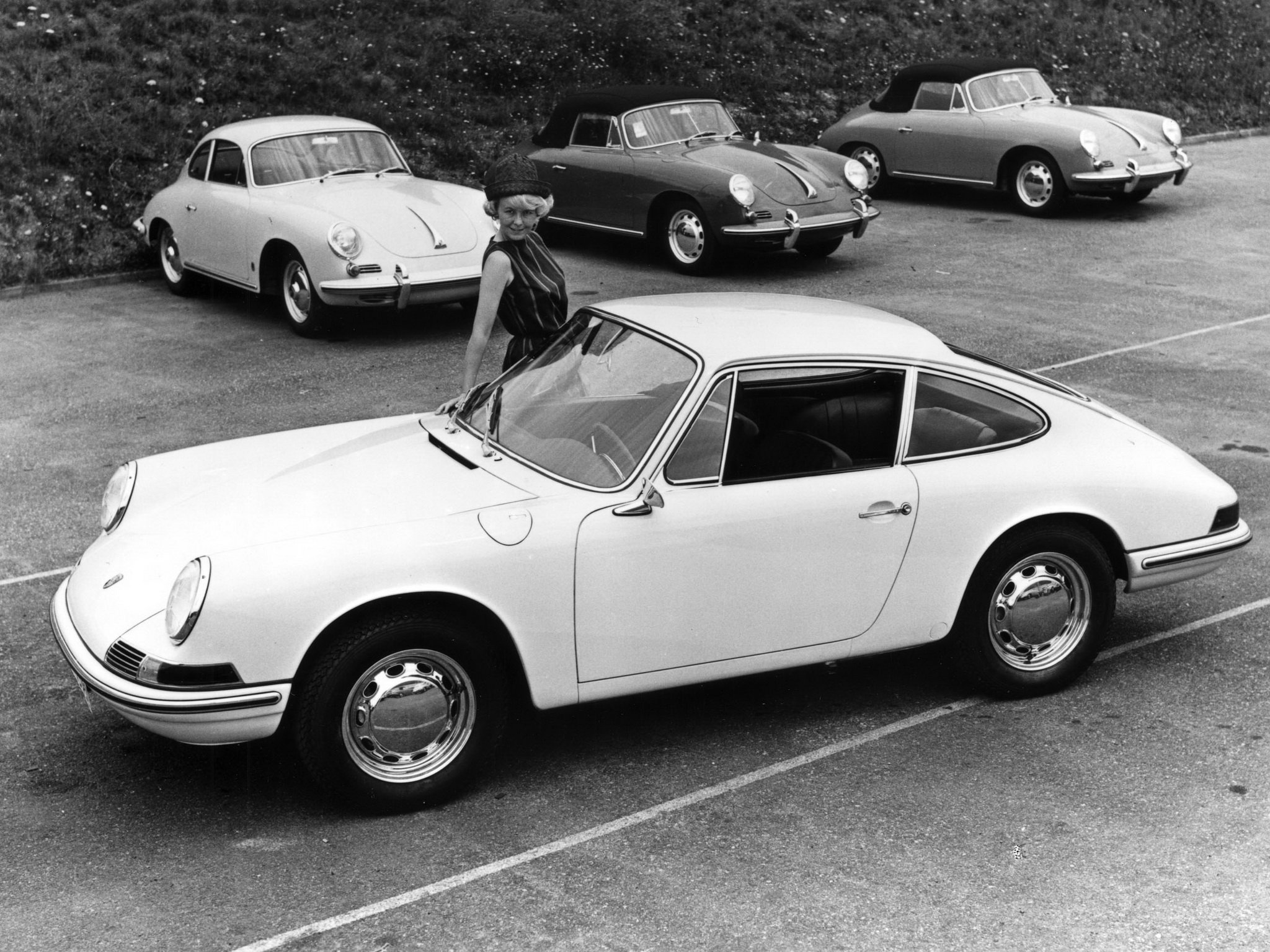
In 1965 Porsche released the 912
The production of the Porsche 356 finally came to an end in 1965 and the 912 was born using the same four-cylinder engine from the 356. The 912 was aimed at a more budget market and was built to be an entry-level Porsche being a cheaper version of the 911.
Production of the 912 was short-lived with the car only being produced between 1965 and 1969.
One of the reasons for the short life span on the 912 was the growing success of the 911 and as Porsche were developing more exciting models they released in 1965 the 911 Targa which was a unique design combining a protective rollbar into the chassis design allowing a large section of the roof panel to be removed, creating an open-air experience for the driver.
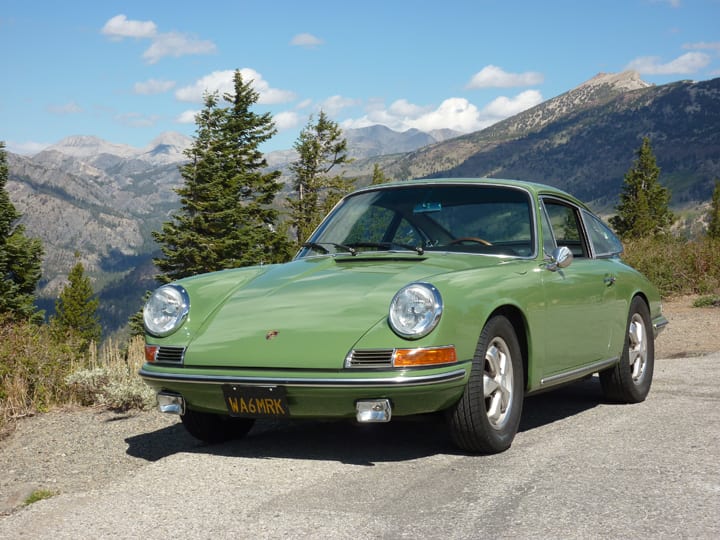

In 1966 Porsche released the 911 s
It was in 1966 that the new 911 s first introduced which was focussed on the delivery of more power taking the engine from 130 bhp to 160 bhp. This extra 30 bhp meant that the chassis and brakes had to be improved and this was a pinnacle point in the history of the 911 which also helped the development of the lightweight Fuchs wheels.
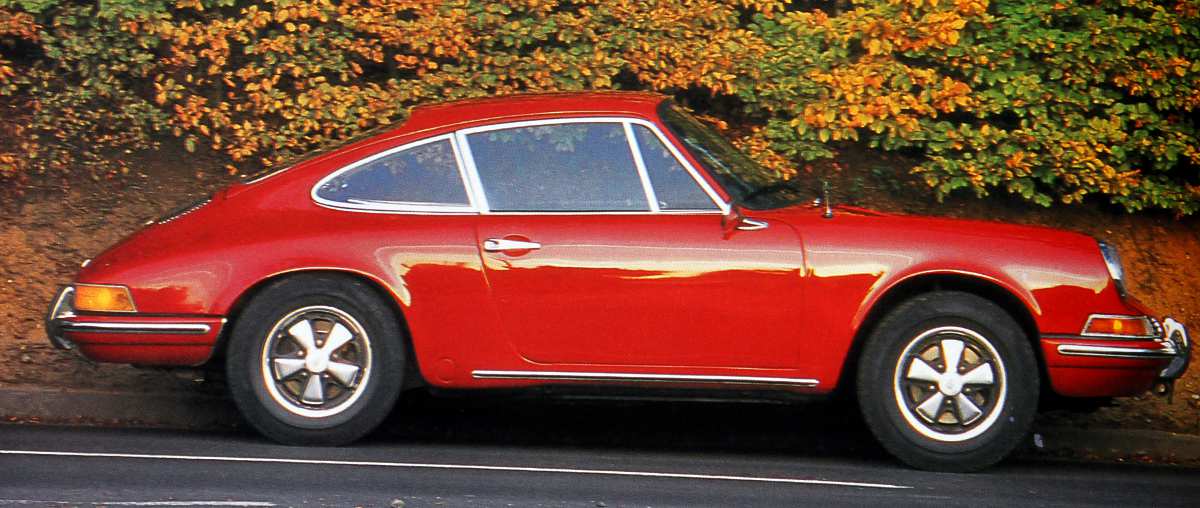
In 1970 Porsche released the 911 with a 2.2 Litre Engine
It was in 1970 that Porsche's developments generated 2.2 litre engine and with this came the lightened aluminium engine lids and also weight-saving exterior parts such as the aluminium bumpers.
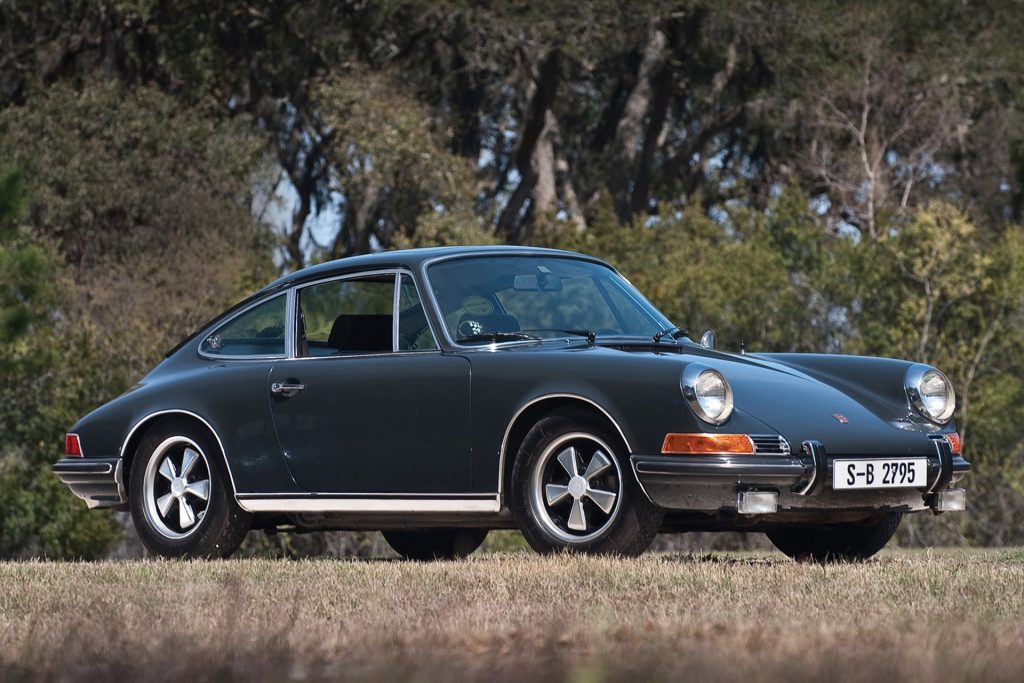
In 1970 Porsche released the 911 with a 2.2 Litre Engine
The 911 was now making huge improvements and recognised across the globe and it was in 1972 that the engine became larger and even more powerful. Porsche increased the displacement to 2.4 litres and the S version now achieved 190 bhp.
This was now a quick car in a lightweight body weighing approximately 2,315 lbs and the car was explained back then as extremely agile.

In 1973 Porsche released the Carrera RS with a 2.7 Litre Engine
The success of the 911 was clear and in 1973 the release of the Carrera RS which was designed as a race car for the FIA Group 4 class with a 2.7 litre engine producing 210 bhp was to create a car with a real punch. This was the first introduction of mechanical fuel injection this car had groundbreaking aerodynamics with a famous ducktail spoiler.
This was the first time was had the name "Carrera" which was name after the Carrera Panamericana Race in Mexico taking place in the early 1950s.
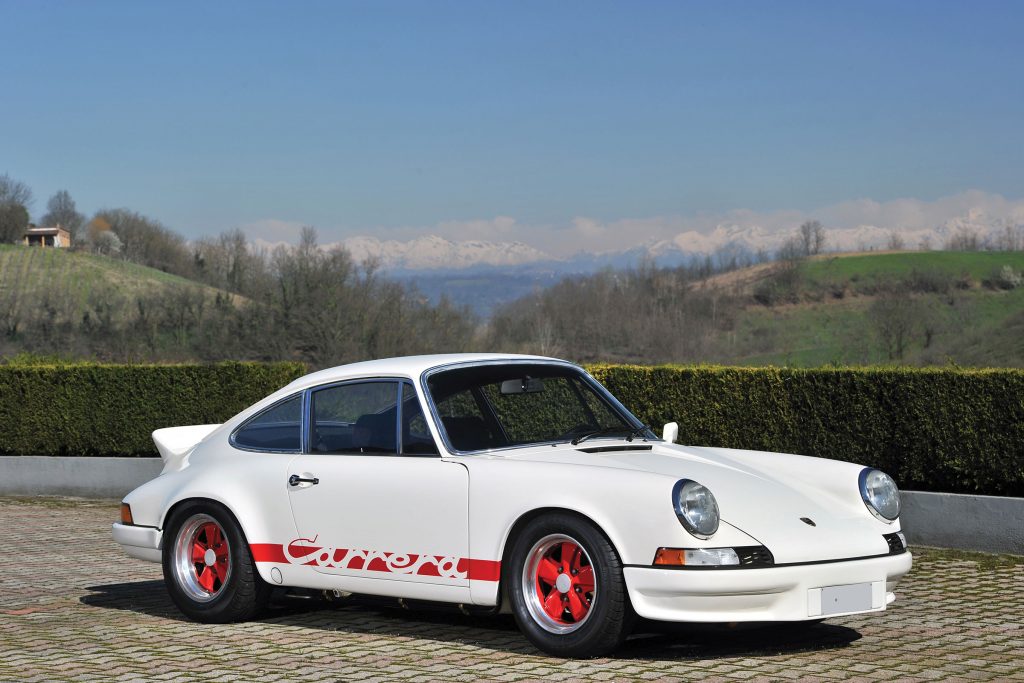
The official Birth Of The 911 Turbo was in 1974
It was in 1975 Porsche released the 911 930 Turbo
It was in 1975 that the world was given a gem from Porsche, a car that would change the future of all supercars which was named the 911 930 Turbo.
Porsche had been developing the Turbo in 1972 and in 1975 they were ready to release this model with a 3.0 litre turbo charged engine producing 260 BHP. The car also took a wider shape at the rear and this was to become something of a fashion icon. The large rear spoiler was released and this amazing piece of engineering became the fastest production car in Germany.
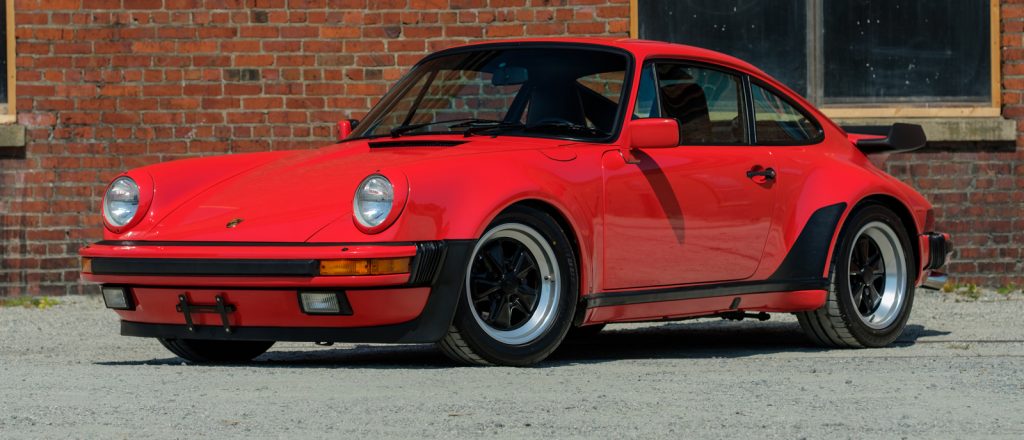
In 1978 with further improvements the Porsche 911 Turbo was given an engine upgrade to 3.3 litre and produced 296 BHP and with this came the introduction of the intercooler.
In 1990 Porsche released the 911 964 Turbo
The success of the Turbo was clear and the car had become an icon and often referred to as the ultimate supercar. This four-seater gem was the poster car for children growing up and everyone, even people who didn't really like cars knew and admired the 911 Turbo, it was the true iconic one a kind sports car.
As Porsche released the 964 derivative with the 3.3 litre engine was now pushing 315 BHP.

In 1992 Porsche released the 911 964 Turbo S - Limited to 80 cars
It was in 1992 that Porsche introduced the first Turbo S which was to put the 911 Turbo on steriods. The S featured a more spartan interior and the car was lowered giving it a different stance.
The engine was tweaked to produce 376 bhp and in the only year of the Turbo S's production run, approximately 80 cars were produced.
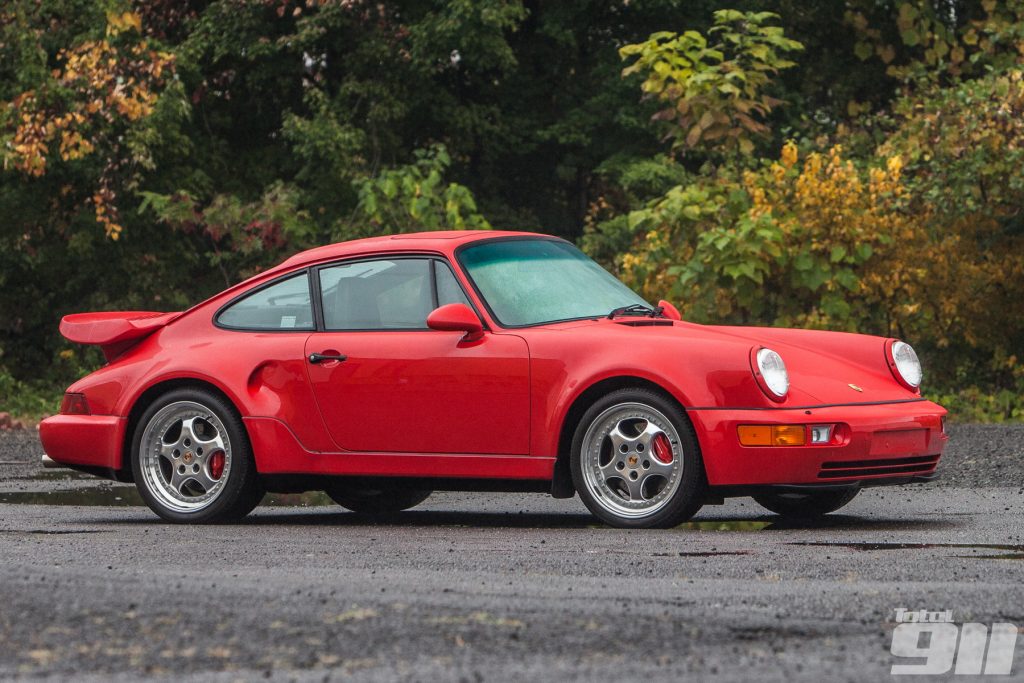
In 1994 Porsche released the 911 964 Turbo 3.6 Litre
Porsche took the development of the 911 Turbo further and in 1993 / 94 they released the 3.6 engine which produced 360 BHP.
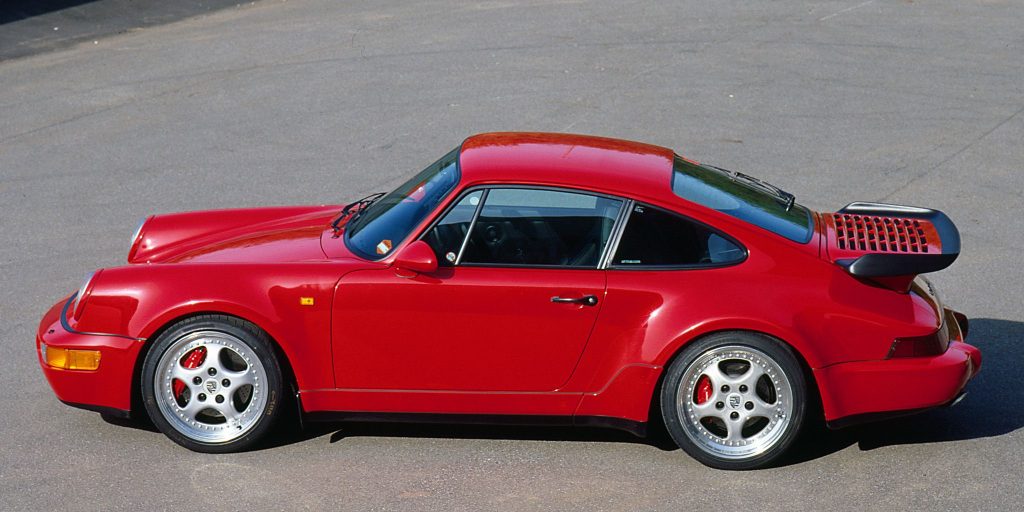
In 1995 Porsche released the 911 993 Turbo
The shape of the 911 had not changed since the 70's and in 1995 Porsche released the 993 derivative which was to be the last air-cooled 911. The 993 changed the front of the car and design elements of the legendary Porsche 959 could be seen. This was also the introduction of the use of twin-turbos.
Porsche had also developed a permanent AWD system to handle the power increase which had now taken the car to 400 bhp from the 3.6 litre engine. This 911 Turbo was capable of achieving 0 to 60 mph in 3.6 seconds and 184.3 mph which was extremely quick for a production road car.
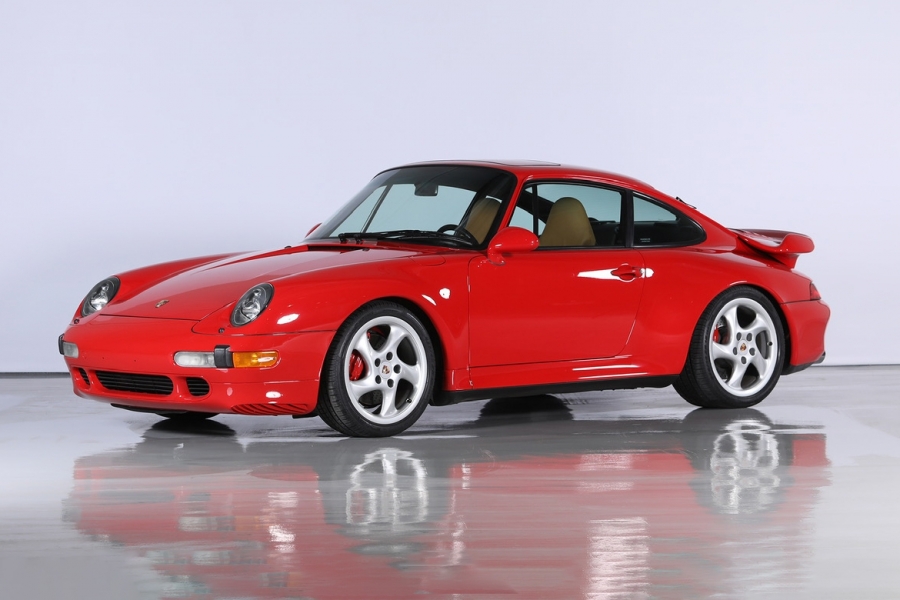
In 2000 Porsche released the 911 996 Turbo
The Porsche 996 variant was released in 1997 developed by Pinky Lai under Porsche design chief Harm Lagaay and was the first water-cooled 911 which featured a newly designed front which some say is not a true 911 shape and some disliked the design of the headlights bleeding into the bonnet rather than being upright and round.
The 996 had a drag coefficient of Cd=0.30 which was the result of hours spent in the wind tunnel to create what Porsche thought was the future shape for 911's.
In 2000 the release of the Turbo, a four-wheel-drive system and 3.6-litre twin-turbocharged and intercooled flat-six engine which was producing a power output of 313 kW (426 PS; 420 hp).
This 996 Turbo could achieve 0 to 60 mph in 4.2 seconds and this felt like a very fast and able car to drive.
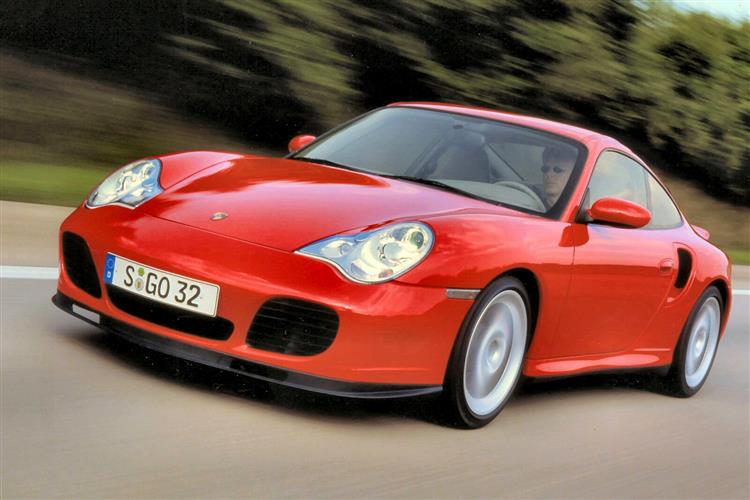
In 2005 Porsche released the 911 996 Turbo s
The 996 Turbo S was released in 2005 which made the 996 a sub 4 second car with 0 to 60 mph down to 3.9 seconds from a 450 BHP 3.6 Litre engine.
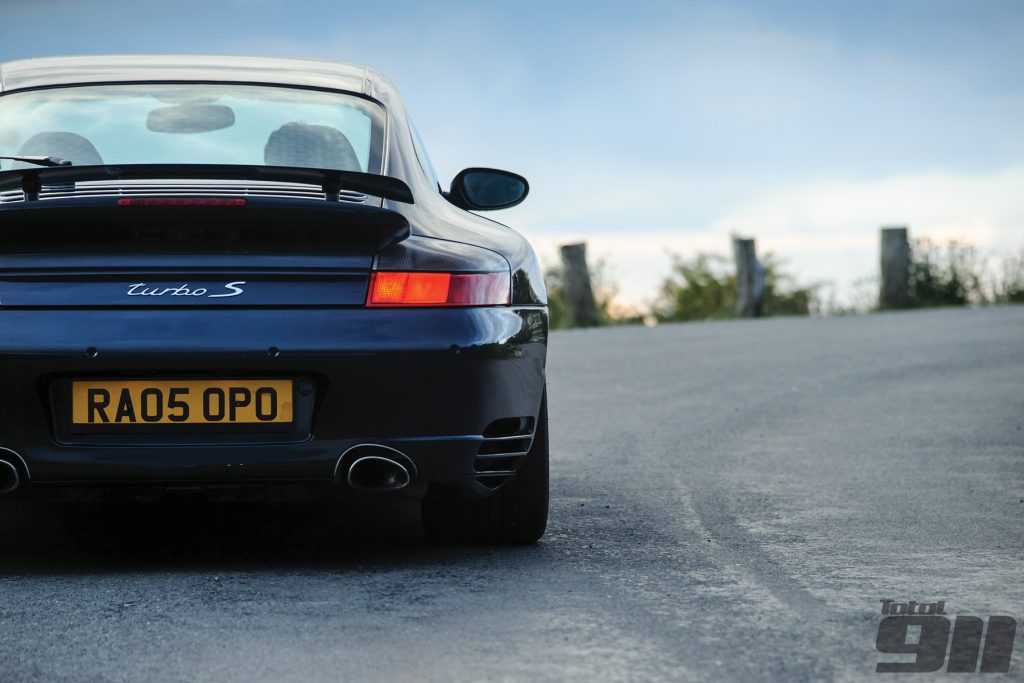
In 2006 Porsche released the 911 997 Turbo
In 2010 Porsche released the 911 997.2 Turbo
Porsche had listened to the critics and changed the 996 shape back to the previous look and the 997 became an amazing looking car bringing the historical shape back to life and the 997 interior also took the car into the present-day needs of a driver.
The 997 Turbo had been developed to be the best 911 Turbo yet and became a car other manufactures became jealous of. The flat-six 3.6 Turbo was environmentally friendly and super fast.
The 911 997 Turbo performance was 0 to 60 mph in 3.9 seconds with a top speed of 200 mph with a chassis that took the car to new handling heights making this one very special car.

In 2011 Porsche released the 911 997.2 Turbo S
Porsche's development of the 997 took the 911 Turbo to new standards and the Turbo S was released which made 0 to 60 mph capable in 3.3 seconds and a top speed of 196 mph.
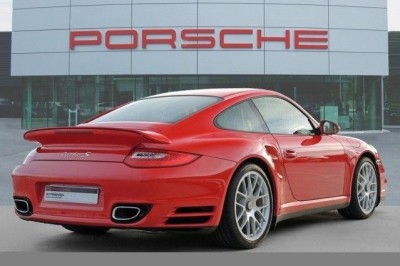
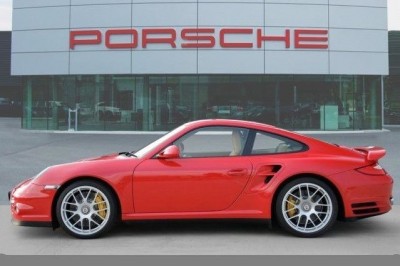
In 2011 Porsche released the 911 991
The 991 derivative was built on an entirely new platform which was a big thing for the 911. It was only the third time since the original 911 launched in 1963 that Porsche changes the chassis of the 911. The 996 derivative in 1999 was the second new platform and this brought handling improvements and further advantages.
First introduced at the 2011 Geneva Motor Show, the 911 991 Carrera was equipped with a 3.4 litre boxer engine with direct fuel injection which was generating 350 BHP and this base model grabbed the attention of petrol heads globally.
It was in November 2014 at the LA Motor Show, the 991 Carrera GTS was released and this new model sits between the Carrera S and GT3 and this model produced 430 BHP and with the PDK 7 speed gearbox was achieving 0 to 60 mph in 3.8 seconds with the help of the amazing launch control. Unlike other manufacturers, Porsche's launch control doesn't cause warranty issues and can be done repeatedly without reset.
Compared to the 997 derivative, the 991 is slightly larger, with the wheelbase increased by 100 mm and the overall length up by 70 mm.
In 2013 Porsche released the 911 991 Turbo
In May 2013, the 911 991 Turbo was launched with a twin-turbocharged 3.8-litre flat-6 engine producing 520 BHP and was taking this larger 911 from 0 to 60 mph in 3.2 seconds.
This 991 Turbo was truly breathtaking and if you consider the 991 GT3 performance was 0 to 60 mph in 3.5 seconds and the true race-bred GT3 RS was 0 to 60 mph in 3.3 seconds the performance of this 4 seater monster with no roll cage that could be used to go to the shops or a trip around Europe with luggage didn't make sense to Petrol Heads and the Turbo has been names the fastest able supercar produced by any manufacturer.
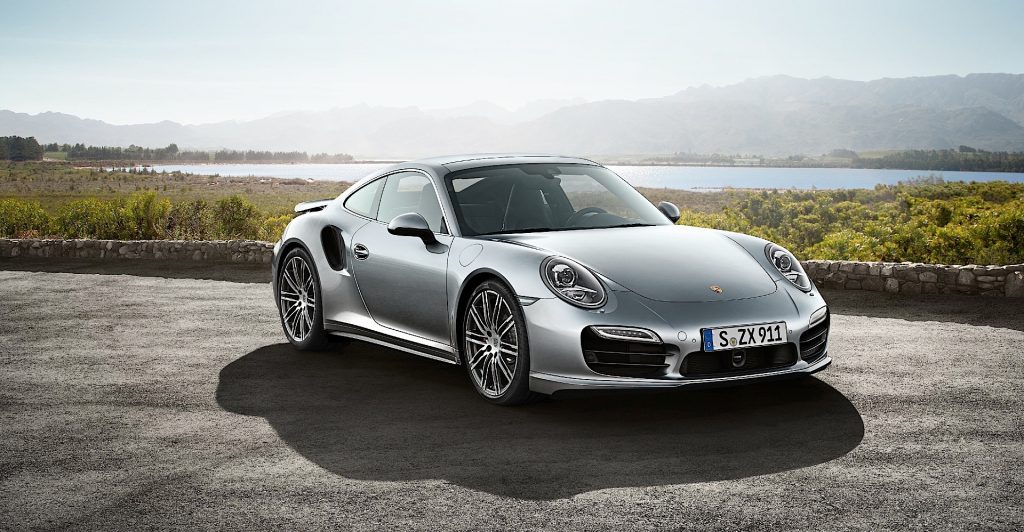
In 2014 Porsche released the 911 991 Turbo S
The Porsche 911 Turbo in 2014 is now 40 years old with four decades of success and the development of this amazing car which had become a global name winning the hearts of true petrol heads was an iconic symbol of what a supercar should be and with this 991 derivative being the best car ever produced as a true road car the amazing Porsche engineers developed the Turbo S.
The Turbo S version was upgraded producing 560 BHP and the amazing 700 Nm of torque. To make the car even more insane the torque is able to be pushed to 750 Nm in Sport mode which introduces the over-boost function.
This 911 991 Turbo S was nicknamed the missile reaching 0 to 62 mph in 3.1 seconds as claimed by Porsche. Car tests and magazines using the Turbo S became even more shocked because the S model actually achieves 0 to 60 mph in 2.6 seconds and with the new technologies such as adaptive aerodynamics and rear-wheel steering are included as standard this car over-impressed the car world.
To celebrate this success Porsche decided to release a 40th Birthday special edition and this car was going to be extremely special. Limited to only 40 units, and 40 not being at random, 1 car being built for each year makes this one of the most collectable 911's to-date.
This special edition was designed and manufactured by Porsche Exclusive which only get involved in very special models and the is Porsche's personalisation department. They were given the task of making this 911 991 look like the original 911 Turbo 930 from 1974 which was built 40 years ago.
The Exclusive design team developed a black rear upper spoiler and 20-inch Sport Classic alloy wheels in gloss black and then continued this black addition to the exterior door handles, mirrors and added the black classic 1970s style Porsche script along the sills.
The interior was designed as black leather upholstery featuring Guards Red contrasting stitching to represent the original 930 Turbo Guards Red and they designed unique highlights which included an embossed Union flag on the centre storage compartment lid. The interior was full of Carbon fibre and even has bespoke floor mats with leather edges.
When you open the door you also get a special carbon sill guard which is illuminated with the special edition elements and wording.
The 911 Turbo S Exclusive GB Edition was available to order in a choice of three exterior colours which was silver, white or red. Red being the Guards Red of the original 930 Turbo regarded as the quintessential colour for the original 911 Turbo.
Each person purchasing this special edition on delivery will be be given a personal photo album documenting the production process of the exact car and unique design sketches in a leather-bound album.
Each car also comes with an Exclusive GB Edition indoor car cover for collectors to use to keep these collectable cars clean and safe.
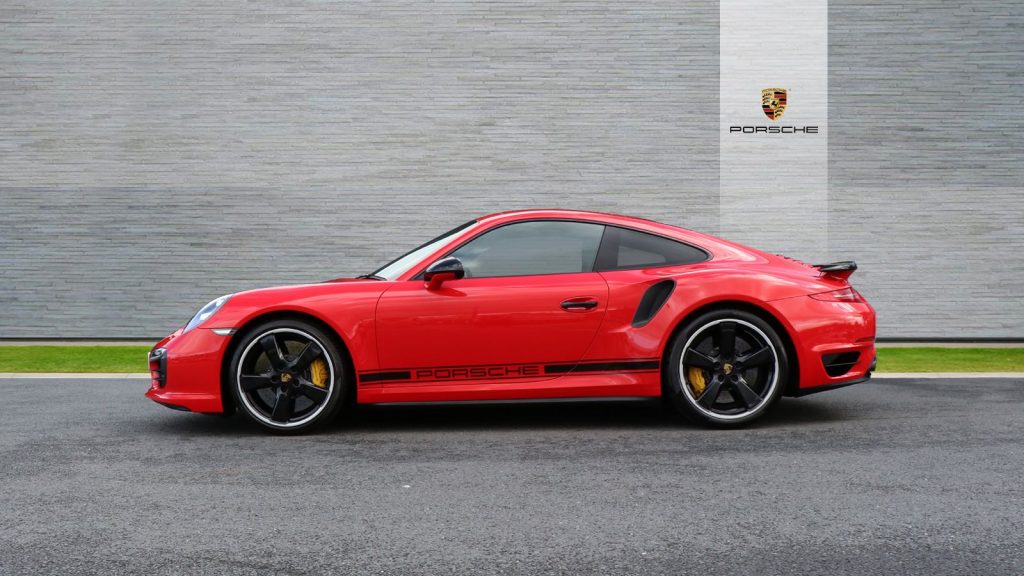
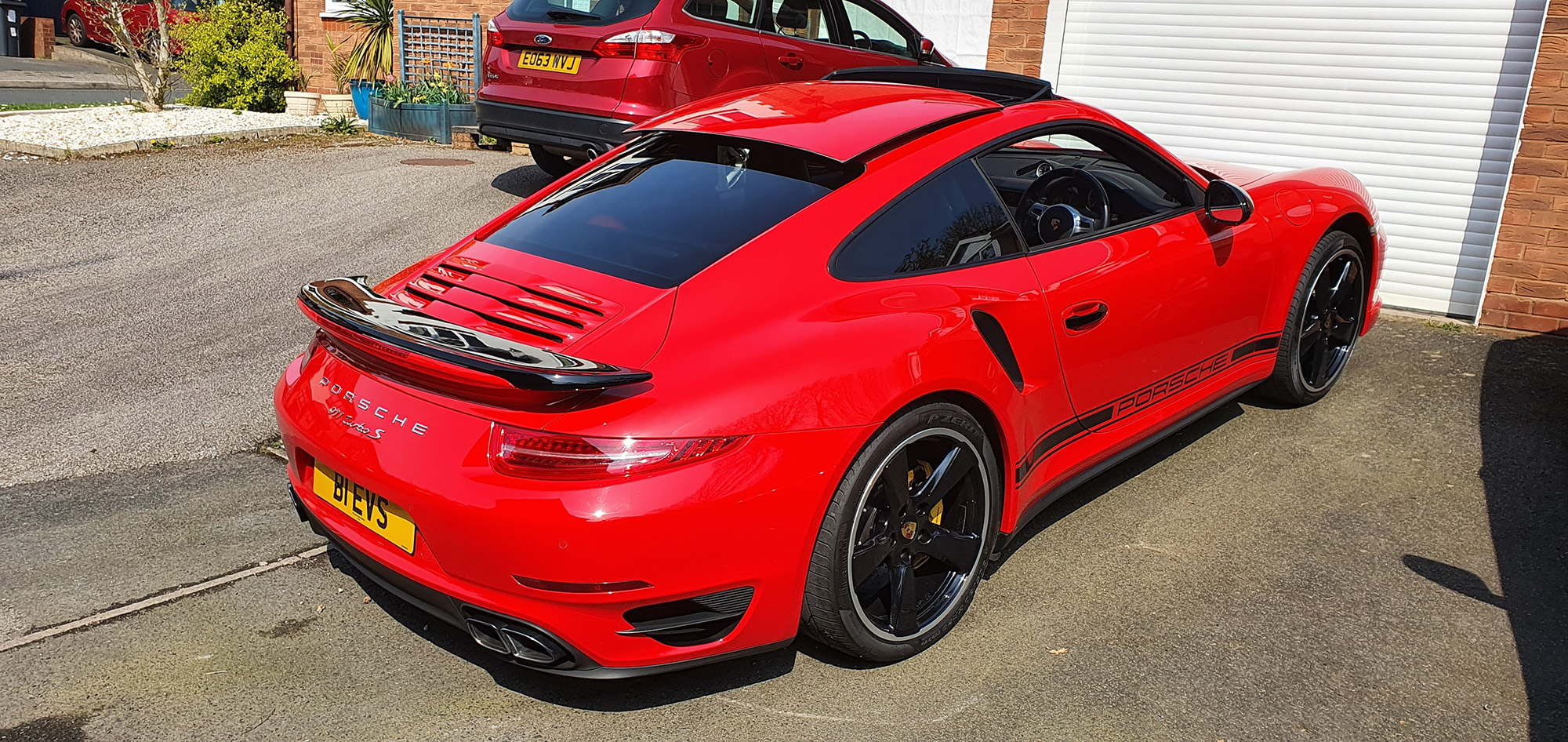
Special features of the 911 Turbo S Exclusive GB Edition are:
- Choice of three exterior colours: GT Silver metallic, White, Guards Red
- Contrasting exterior features in high gloss black: 20-inch Sport Classic alloy wheels, upper part of rear spoiler, SportDesign wing mirrors, exterior door handles
- Porsche logo script in black along door sills
- Storage compartment lid with embossed Union flag
- SportDesign steering wheel with centre marking in Guards Red and rim with Guards Red stitching
- Black leather interior with Guards Red stitching
- Privacy glazing
- Porsche crest embossed on head restraints
- Seat belts in Guards Red
- Personalised carbon door sill guards with ‘911 Turbo S – Exclusive GB Edition’ in illuminated lettering
- Carbon interior trim, including PDK gear lever, with chrome logo on dash insert
- Bespoke floor mats with leather edging and decorative stitching in Guards Red
- Complementary accessories including personalised indoor car cover, a unique photo book and key pouch in leather with decorative Guards Red stitching
911 991 Turbo S Performance - How Fast Is It?
General performance
| Top speed | 198 mph |
| 62 - 90 mph | 2.3 s |
| 62 - 124 mph | 6.8 s |
| 124 - 186 mph | 20.1 s |
| 0 - 100 mph - 0 | 10.3 s @ 758 ft |
| max acceleration | 1.10 g (11 m/s²) |
| 18m slalom | 71.8 kph (44.6 mph) |
| Est. emissions | 337 g/km |
| Lateral acceleration | 1.09 g (11 m/s²) |
| Noise @ idle | 56 dB |
| Noise @ 70 mph | 71 dB |
Braking distance
| 62 mph - 0 | 32 m (104 ft) |
| 124 mph - 0 | 128 m (419 ft) |
| 60 mph - 0 | 30 m (98 ft) |
| 70 mph - 0 | 44 m (144 ft) |
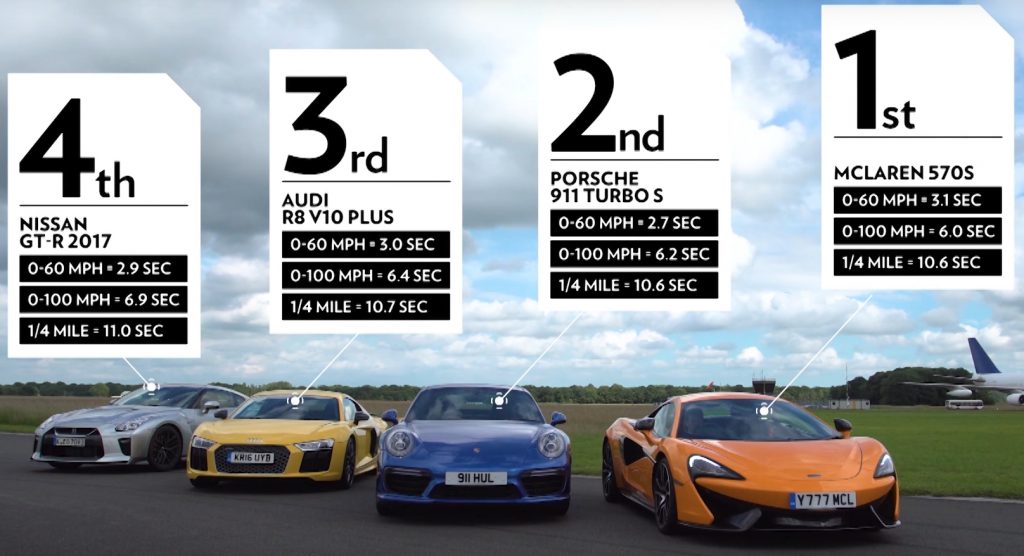
PRESS RELEASE - PORSCHE EXCLUSIVE UNVEILS 911 TURBO S GB EDITION
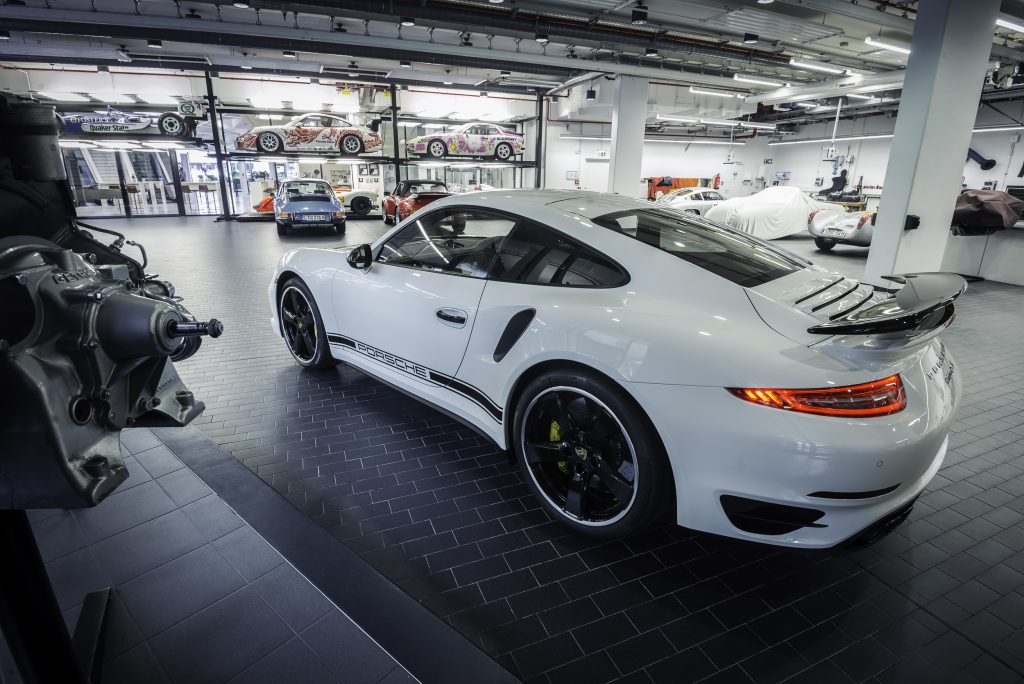
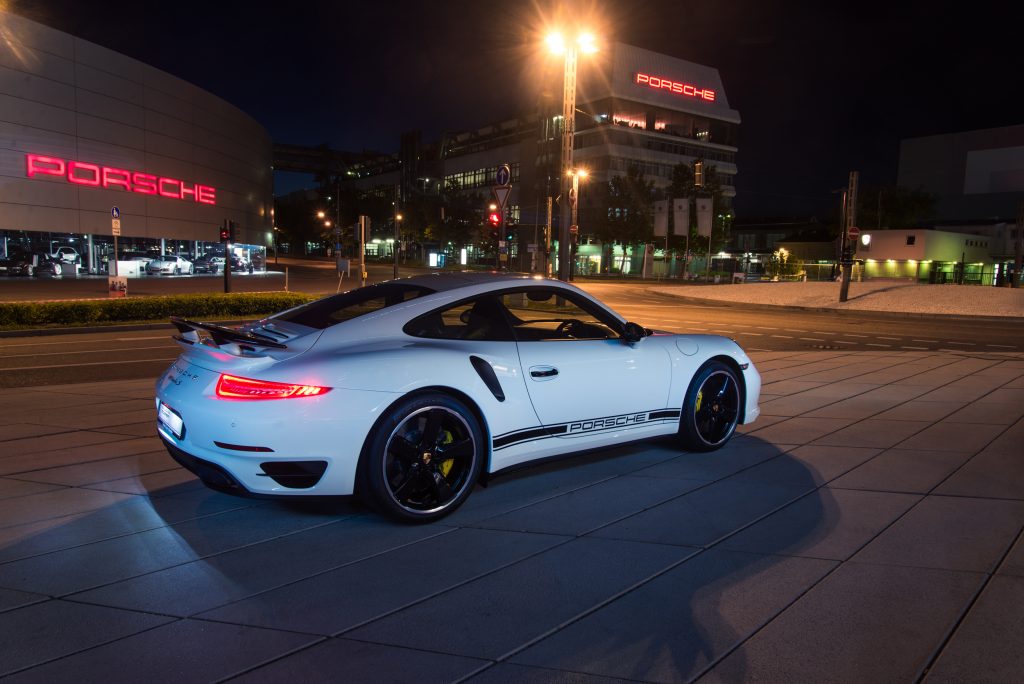
News provided by Pressat Wire on Tuesday 15th Jul 2014
- Bespoke Porsche 911 Turbo S Exclusive GB Edition is unique to the UK market, limited to 40 examples
- Designed and manufactured by Porsche Exclusive, a department of the factory dedicated to providing customers with special vehicles which fulfil their special wishes
- 911 Turbo S Exclusive GB Edition celebrates 40 years of the 911 Turbo, with distinctive exterior styling and luxurious interior features
- A sports car icon since 1974, the 911 Turbo remains a benchmark high performance coupé
- 911 Turbo S Exclusive GB Edition features a 560 hp flat-six twin-turbo engine
- Available to order now from Porsche Centres, priced from £150,237
Over four decades, the reputation of the Porsche 911 Turbo as a technology showcase combining the virtues of a circuit race car with those of an everyday road car has consistently reached new heights. Since it first went on sale in 1974, the Porsche 911 Turbo has become revered by car enthusiasts and is renowned as a benchmark high performance sports coupé.
In 1986, Porsche became the world’s first car manufacturer to establish a specialist department at the factory dedicated to tailoring cars to bespoke requirements. Porsche Exclusive provides customers with a unique vehicle that meets all of their special wishes – in terms of both styling and performance. But besides offering custom manufacturing, Porsche Exclusive also builds extraordinary limited series cars.
With the unveiling of the Porsche 911 Turbo S Exclusive GB Edition, the enduring appeal of the rear-engined, turbocharged 911 and the tradition at Porsche of building cars for the individual are combined in a coupé that is both the pinnacle of the 911 range and also the height of individuality.
As the name suggests the new 911 Turbo S Exclusive GB Edition is unique to the UK market and will be offered in a limited edition of 40, priced from £150,237. Available to order now, each car will be delivered together with a personal photo book documenting the production process, a bespoke Exclusive GB Edition indoor car cover and unique design sketches.
911 Turbo S Exclusive GB Edition
An all-wheel drive chassis with active rear axle steering, adaptive aerodynamics, full-LED headlights and a 560 hp flat six-cylinder twin-turbocharged engine emphatically underline the sporting character of the 911 Turbo S, on which the Exclusive GB Edition is based.
The Porsche Dynamic Chassis Control (PDCC) active anti-roll system further increases the handling capability. Aided by the Sport Chrono Package Plus incorporating dynamic engine mounts, and Porsche Ceramic Composite Brakes (PCCB), the 911 Turbo S can sprint from 0 to 62 mph in just 3.1 seconds and on to a top speed of 197 mph. The benchmark lap time around the Nürburgring-Nordschleife is 7 min 27 secs.
To this, the 911 Turbo S Exclusive GB Edition adds unique features carefully chosen to build on the compelling dynamic attributes and iconic silhouette of the standard coupé. Taking their cue from subtle styling motifs of the original 911 Turbo ‘930’ from 1974, the limited edition stands out clearly as the ultimate – and most Exclusive – ‘Type 991’ 911.
In profile, the 911 Turbo S Exclusive GB Edition shows a clear link to the first 911 Turbo – the black rear upper spoiler, Sport Classic wheels in black, black finished exterior door handles, and the black ‘Porsche’ script along the sills pay homage to its illustrious forebear. Inside, the black leather upholstery features Guards Red contrasting stitching and unique highlights include an embossed Union flag on the centre storage compartment lid.
Special features of the 911 Turbo S Exclusive GB Edition are:
- Choice of three exterior colours: GT Silver metallic, White, Guards Red
- Contrasting exterior features in high gloss black: 20-inch Sport Classic alloy wheels, upper part of rear spoiler, SportDesign wing mirrors, exterior door handles
- Porsche logo script in black along door sills
- Storage compartment lid with embossed Union flag
- SportDesign steering wheel with centre marking in Guards Red and rim with Guards Red stitching
- Black leather interior with Guards Red stitching
- Privacy glazing
- Porsche crest embossed on head restraints
- Seat belts in Guards Red
- Personalised carbon door sill guards with ‘911 Turbo S – Exclusive GB Edition’ in illuminated lettering
- Carbon interior trim, including PDK gear lever, with chrome logo on dash insert
- Bespoke floor mats with leather edging and decorative stitching in Guards Red
- Complementary accessories including personalised indoor car cover, a unique photo book and key pouch in leather with decorative Guards Red stitching
Porsche Exclusive – an overview
At Porsche, a guiding principle has always been to allow each customer to create a highly personal car, with the opportunity to choose from a wide range of styling, powertrain and chassis options. The ultimate expression of this philosophy is Porsche Exclusive, via which customers can create an entirely bespoke vehicle.
From the earliest days of the company, Porsche customers have been able to ask the factory to modify their cars for road or racing purposes. In 1986, the Porsche Exclusive manufacturing department was established.
The first Porsche Exclusive limited production car was the 911 Turbo ‘Flachbau’ (flat nose) whose rakish front styling with pop-up headlamps was inspired by the 935 race car. A total of 984 examples were built between 1982 and 1989.
In 1992/93, a lightweight version of the ‘Type 964’ 911 Turbo S was built in co-operation with Porsche Motorsport. Featuring a 381 hp engine and a 180 kg weight saving versus the standard car, 86 examples of this ‘Supercar Champion’ edition were sold.
A very limited run of just 15 examples of the 911 Carrera 2 Speedster were built in the coveted wide-body ‘Turbo-look’ in 1993, plus 76 editions of the 911 Turbo 3.6-litre with ‘flat nose’ styling. Two years later, 14 units of a ‘Type 993’ 911 Turbo Cabriolet were created. These editions are eclipsed in rarity by the two ‘Type 993’ 911 Speedsters that were specially built.
In 1997/98, the Exclusive department produced 345 examples of the 911 Turbo S, an edition of the Turbo with 42 hp more than the standard production model.
Porsche Exclusive revived the tradition of limited series production at the IAA in Frankfurt in 2009, with the unveiling of the 911 Sport Classic. With just 250 built, the Sport Classic featured a powerful 408 hp flat-six engine, a unique exterior featuring ‘duck tail’ rear spoiler inspired by the Carrera 2.7 RS and a bespoke interior – and it sold out quickly.
To celebrate the 25th anniversary of the Exclusive department, the 911 Speedster was based on the Type 997 Carrera S, and limited to just 356 units. This number referred to the 356 Speedster which inspired the design, featuring a lower windscreen and purpose-built lightweight folding roof.
The technology of the 911 Turbo S
The performance partners in the powertrain are an advanced engine and Porsche Traction Management (PTM) all-wheel drive system. The turbocharged 3.8-litre flat-six engine with direct petrol injection produces 560 hp (412 kW). Porsche continues to be the only car maker to offer twin turbochargers with variable turbine geometry on a petrol engine.
Power is transferred to the drivetrain via a seven-speed dual-clutch transmission (PDK), which enables an auto start/stop function with engine shut-off that now activates earlier (when coasting to a halt) as well as the proven coasting function. Together with a new thermal management system for the turbo engine and the PDK transmission, fuel efficiency technologies have reduced NEDC fuel consumption by up to 16 per cent to 29.1 mpg.
All-wheel drive with electro-hydraulic control
For an even faster and more precise power distribution to the two axles, Porsche has developed a new all-wheel drive system (PTM) with an electronically controlled and activated multi-plate clutch for the latest ‘Type 991’ generation of 911 Turbo S. The system is equipped with a new water cooling function, so that it can direct even more drive torque to the front wheels if necessary. Simultaneously, the optimised interplay of the engine, transmission and all-wheel drive systems delivers even better sprint capabilities.
Rear axle steering sustainably improves handling
The introduction of rear axle steering to all 911 Turbo models improves both track driving and everyday performance of the two new sports cars immensely. Instead of conventional control arms, the system consists of two electro-mechanical actuators on the left and right of the rear axle. The steering angle of the rear wheels can be varied by up to 2.8 degrees, depending on vehicle speed. At speeds up to 31 mph (50 km/h), when the front wheels are turned the system steers the rear wheels in the opposite direction. This actually corresponds to a virtual shortening of the wheelbase by 250 mm, which gives the 911 Turbo unrivalled cornering agility. The system lets the car turn faster into the bend and offers more dynamic steering responses. Furthermore, this noticeably simplifies low speed manoeuvring and parking.
At speeds above 50 mph (80 km/h), the system steers the rear wheels parallel to the turned front wheels. This is equivalent to a virtual lengthening of the wheelbase by a significant 500 mm and gives the sports car tremendous stability, especially at high speeds. At the same time, the steering input by the driver leads to significantly faster build-up of lateral force at the rear axle, which initiates the change in direction more spontaneous and harmoniously.
Active aerodynamics improve efficiency and performance
Porsche has developed an active aerodynamic system on the new 911 Turbo models. It consists of a sturdy, retractable three-stage front spoiler -- whose segments can be pneumatically extended -- and a deployable rear wing with three adjustable positions. This makes it possible to tune the aerodynamics of the 911 Turbo to fulfil driver wishes for either optimal efficiency (speed position) or ultimate dynamic performance.
In the performance position, all segments of the front spoiler are fully extended, and they generate considerable downforce on the front axle. Similarly, the rear wing is extended to its maximum height with the greatest angle of attack. This also generates more downforce on the rear axle. The extent to which this system improves dynamic performance is demonstrated by the fact that it can reduce lap times around the Nürburgring-Nordschleife by up to two seconds.
Ends
For more information, please contact the Porsche press office team:
| Natalie Chandler | Press Office Assistant |
| natalie.chandler@porsche.co.uk | |
| Tel | 0118 916 5050 |
| Rob Punshon | Press Officer |
| rob.punshon@porsche.co.uk | |
| Tel | 0118 925 2733 |
| Mobile | 07881 008950 |
| Nick Perry | Product Affairs Manager |
| nick.perry@porsche.co.uk | |
| Tel | 0118 925 2721 |
| Mobile | 07775 860 291 |
| Mike Orford | Head of PR |
| mike.orford@porsche.co.uk | |
| Tel | 0118 925 2720 |
| Mobile | 07774 728911 |
| Press website | porsche-press.co.uk and newspress.co.uk |
| Press email | press@porsche.co.uk |
| Press fax | 0118 925 2719 |
| Press Twitter | @PorscheGB_PR |
Press release distributed by Pressat on behalf of Pressat Wire, on Tuesday 15 July, 2014.
Porsche 911 991 Model Range
Engines
| Model | Engine (displacement) | Power | Torque |
| Carrera | 3,436 cc (3.4 L) | 350 PS (257 kW; 345 hp) at 7,400 rpm | 390 N⋅m (288 lb⋅ft) at 5,600 rpm |
| Carrera S | 3,800 cc (3.8 L) | 400 PS (294 kW; 395 hp) at 7,400 rpm | 440 N⋅m (325 lb⋅ft) at 5,600 rpm |
| Carrera GTS/S | 3,800 cc (3.8 L) | 430 PS (316 kW; 424 hp) at 7,400 rpm | 440 N⋅m (325 lb⋅ft) at 5,600 rpm |
| GT3 | 3,799 cc (3.8 L) | 475 PS (349 kW; 469 hp) at 8,250 rpm | 440 N⋅m (325 lb⋅ft) at 6,250 rpm |
| GT3 RS | 4,000 cc (4.0 L) | 500 PS (368 kW; 493 hp) at 8,250rpm | 460 N⋅m (339 lb⋅ft) at 6,250 rpm |
| 911 R | 4,000 cc (4.0 L) | 500 PS (368 kW; 493 hp) at 8,250rpm | 460 N⋅m (339 lb⋅ft) at 6,250 rpm |
| Turbo | 3,800 cc (3.8 L) | 520 PS (382 kW; 513 hp) at 6,000 rpm | 660 N⋅m (487 lb⋅ft) at 1,950 rpm |
| Turbo S | 3,800 cc (3.8 L) | 560 PS (412 kW; 552 hp) at 6,500 rpm | 700 N⋅m (516 lb⋅ft) at 2,100 rpm |
| Turbo S - overboost | 3,800 cc (3.8 L) | 560 PS (412 kW; 552 hp) at 6,500 rpm | 750 N⋅m (553 lb⋅ft) overboost |
Performance
| 911 Model | Transmission | Top speed | Acceleration | Weight |
| (0–62 mph) | ||||
| Carrera | 7-speed manual | 180 mph | 4.8 seconds | 1,380 kg |
| Carrera | 7-speed PDK | 178 mph | 4.6 seconds (SC: 4.4) | 1,400 kg |
| Carrera Cabriolet | 7-speed manual | 178 mph | 5.0 seconds | 1,450 kg |
| Carrera Cabriolet | 7-speed PDK | 176 mph | 4.8 seconds (SC: 4.6) | 1,470 kg |
| Carrera S | 7-speed manual | 189 mph | 4.5 seconds | 1,395 kg |
| Carrera S | 7-speed PDK | 188 mph | 4.3 seconds (SC: 4.1) | 1,415 kg |
| Carrera S (Powerkit) | 7-speed PDK | 191 mph | 4.0 seconds | 1,415 kg |
| Carrera S Cabriolet | 7-speed manual | 187 mph | 4.7 seconds | 1,465 kg |
| Carrera S Cabriolet | 7-speed PDK | 186 mph | 4.5 seconds (SC: 4.3) | 1,485 kg |
| Carrera 4 | 7-speed manual | 177 mph | 4.9 seconds | 1,430 kg |
| Carrera 4 | 7-speed PDK | 176 mph | 4.7 seconds (SC: 4.5) | 1,450 kg |
| Carrera 4 Cabriolet | 7-speed manual | 175 mph | 5.1 seconds | 1,500 kg |
| Carrera 4 Cabriolet | 7-speed PDK | 174 mph | 4.9 seconds (SC: 4.7 ) | 1,520 kg |
| Carrera 4S | 7-speed manual | 186 mph | 4.5 seconds | 1,445 kg |
| Carrera 4S | 7-speed PDK | 185 mph | 4.3 seconds (SC: 4.1) | 1,465 kg |
| Carrera 4S Cabriolet | 7-speed manual | 184 mph | 4.7 seconds | 1,515 kg |
| Carrera 4S Cabriolet | 7-speed PDK | 183 mph | 4.5 seconds (SC: 4.3) | 1,535 kg |
| Carrera GTS | 7-speed manual | 190 mph | 4.4 seconds | 1,425 kg |
| Carrera GTS | 7-speed PDK | 189 mph | 4.0 seconds | 1,445 kg |
| Carrera GTS Cabriolet | 7-speed manual | 189 mph | 4.6 seconds | 1,495 kg |
| Carrera GTS Cabriolet | 7-speed PDK | 188 mph | 4.2 seconds | 1,515 kg |
| Carrera 4 GTS | 7-speed manual | 189 mph | 4.4 seconds | 1,470 kg |
| Carrera 4 GTS | 7-speed PDK | 188 mph | 4.0 seconds | 1,490 kg |
| Carrera 4 GTS Cabriolet | 7-speed manual | 188 mph | 4.6 seconds | 1,540 kg |
| Carrera 4 GTS Cabriolet | 7-speed PDK | 187 mph | 4.2 seconds | 1,560 kg |
| Targa 4 | 7-speed manual | 175 mph | 5.2 seconds | 1,540 kg |
| Targa 4 | 7-speed PDK | 174 mph | 5.0 seconds (SC: 4.8) | 1,560 kg |
| Targa 4S | 7-speed manual | 184 mph | 4.8 seconds | 1,555 kg |
| Targa 4S | 7-speed PDK | 183 mph | 4.6 seconds (SC: 4.4) | 1,575 kg |
| Targa 4 GTS | 7-speed manual | 188 mph | 4.7 seconds | 1,560 kg |
| Targa 4 GTS | 7-speed PDK | 187 mph | 4.3 seconds | 1,580 kg |
| GT3 | 7-speed PDK | 196 mph | 3.5 seconds | 1,430 kg |
| GT3 RS | 7-speed PDK | 196 mph | 3.3 seconds | 1,420 kg |
| 911 R | 6-speed manual | 201 mph | 3.8 seconds | 1,370 kg |
| Turbo | 7-speed PDK | 196 mph | 3.2 seconds (SC: 3.0) | 1,595 kg |
| Turbo Cabriolet | 7-speed PDK | 196 mph | 3.3 seconds (SC: 3.1) | 1,665 kg |
| Turbo S | 7-speed PDK | 198 mph | 2.9 seconds | 1,600 kg |
| Turbo S Cabriolet | 7-speed PDK | 198 mph | 3.0 seconds | 1,670 kg |
PDK = Porsche Doppelkupplung (Dual Clutch Transmission)
SC = Sport Chrono
The production of the 991 derivatives ran until December 20, 2019, with 233,540 units produced in all models across the range. The 991 had taken the Porsche 911 to amazing new heights in development and this had been said to be the best 911 yet.



